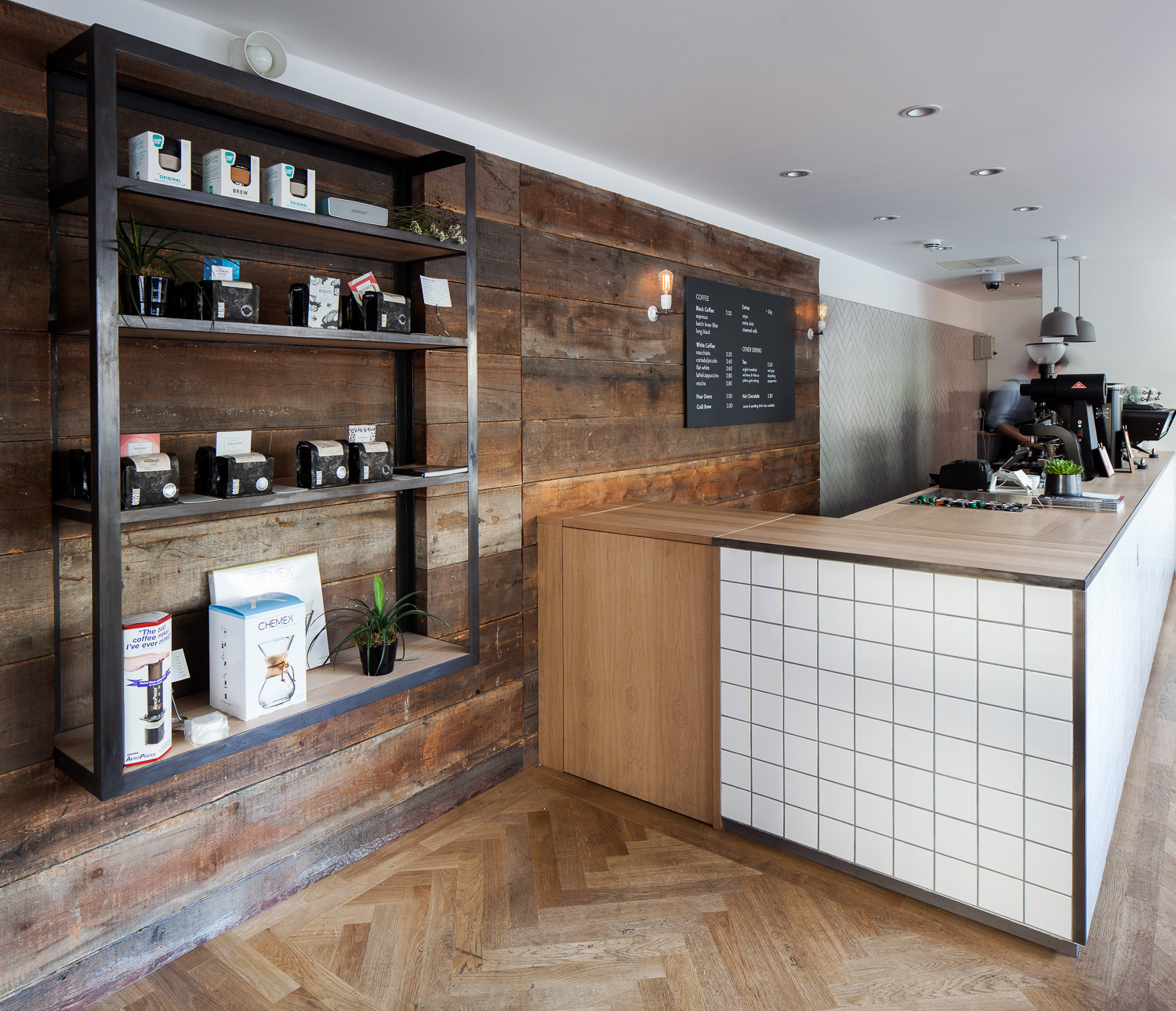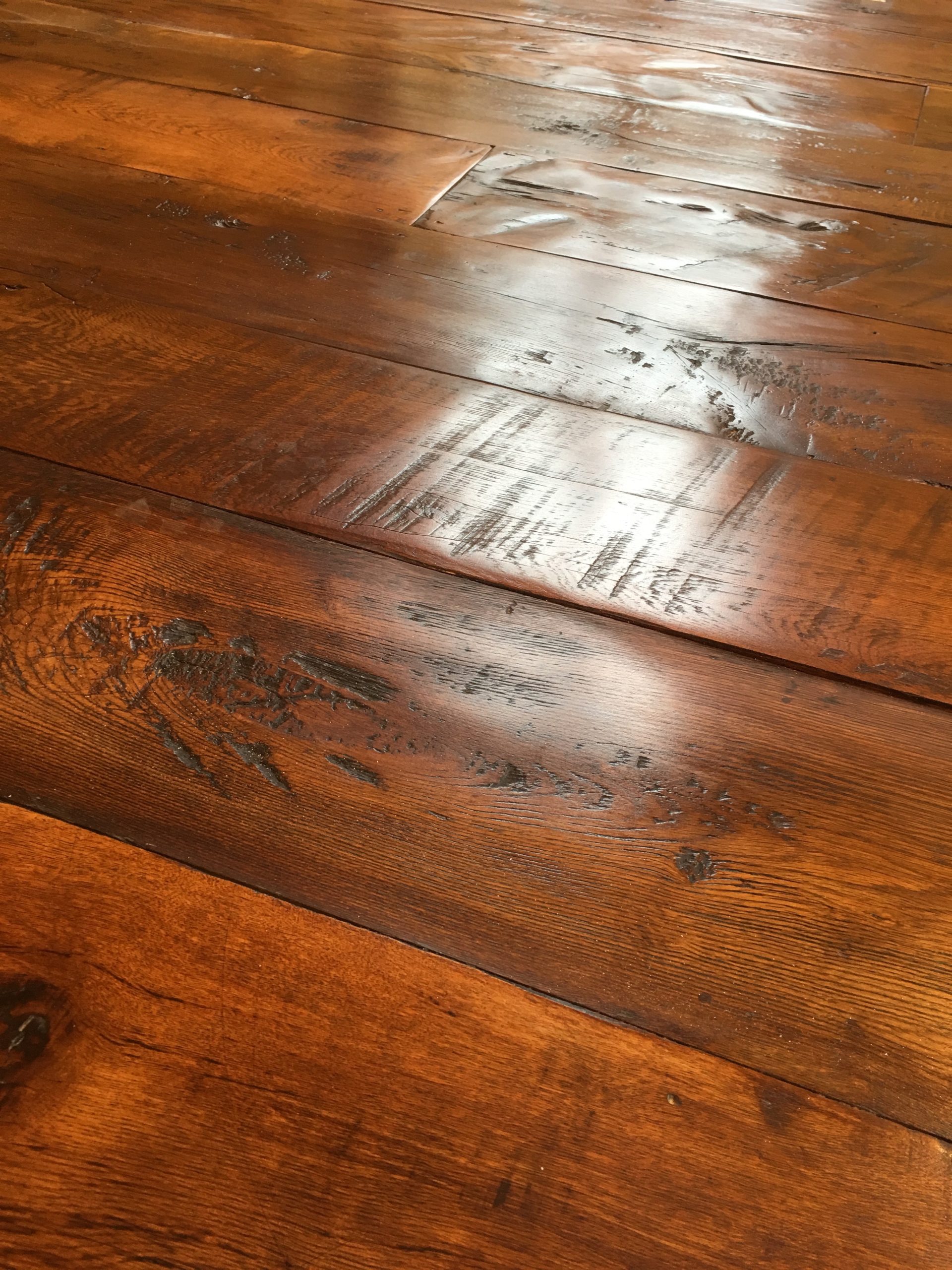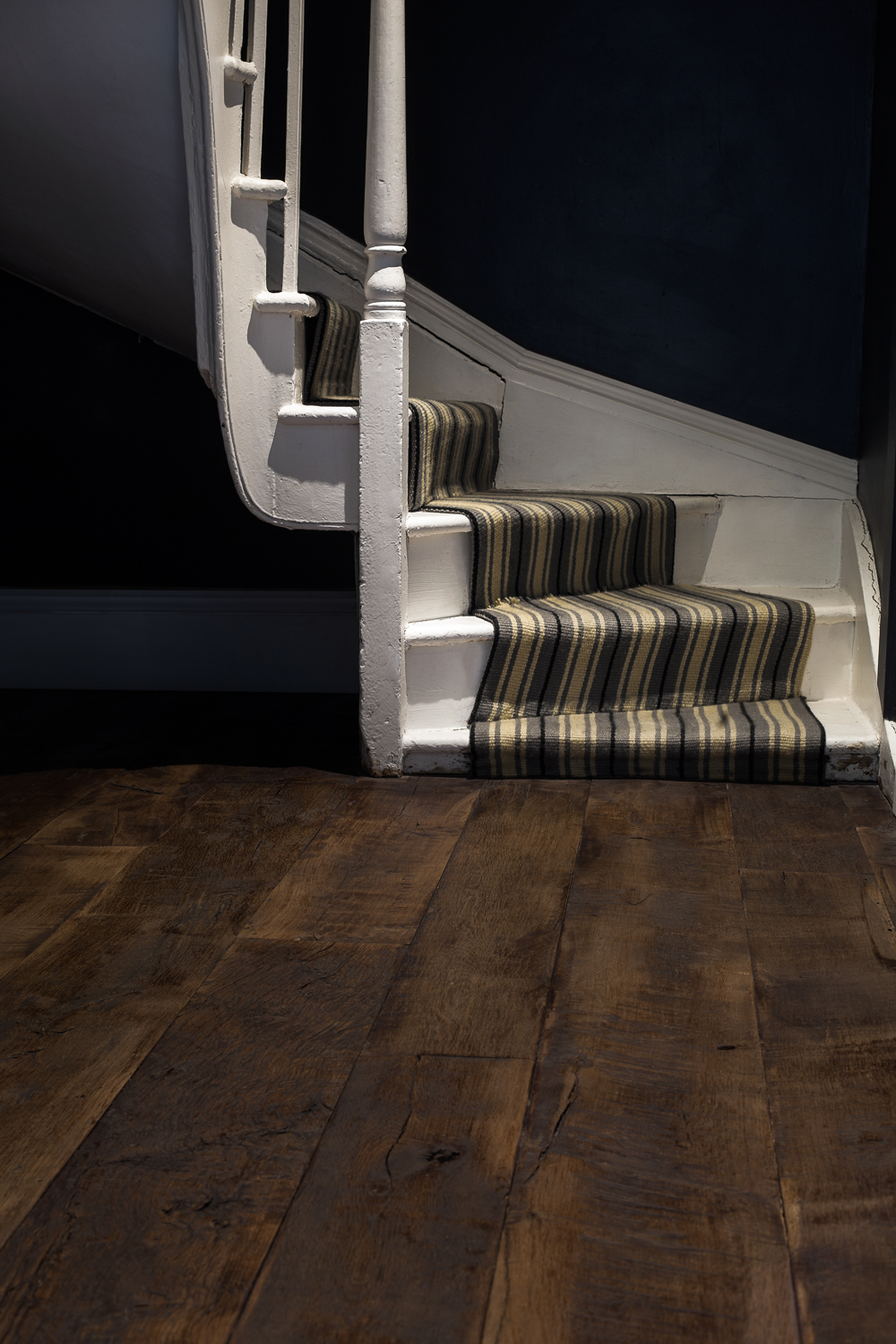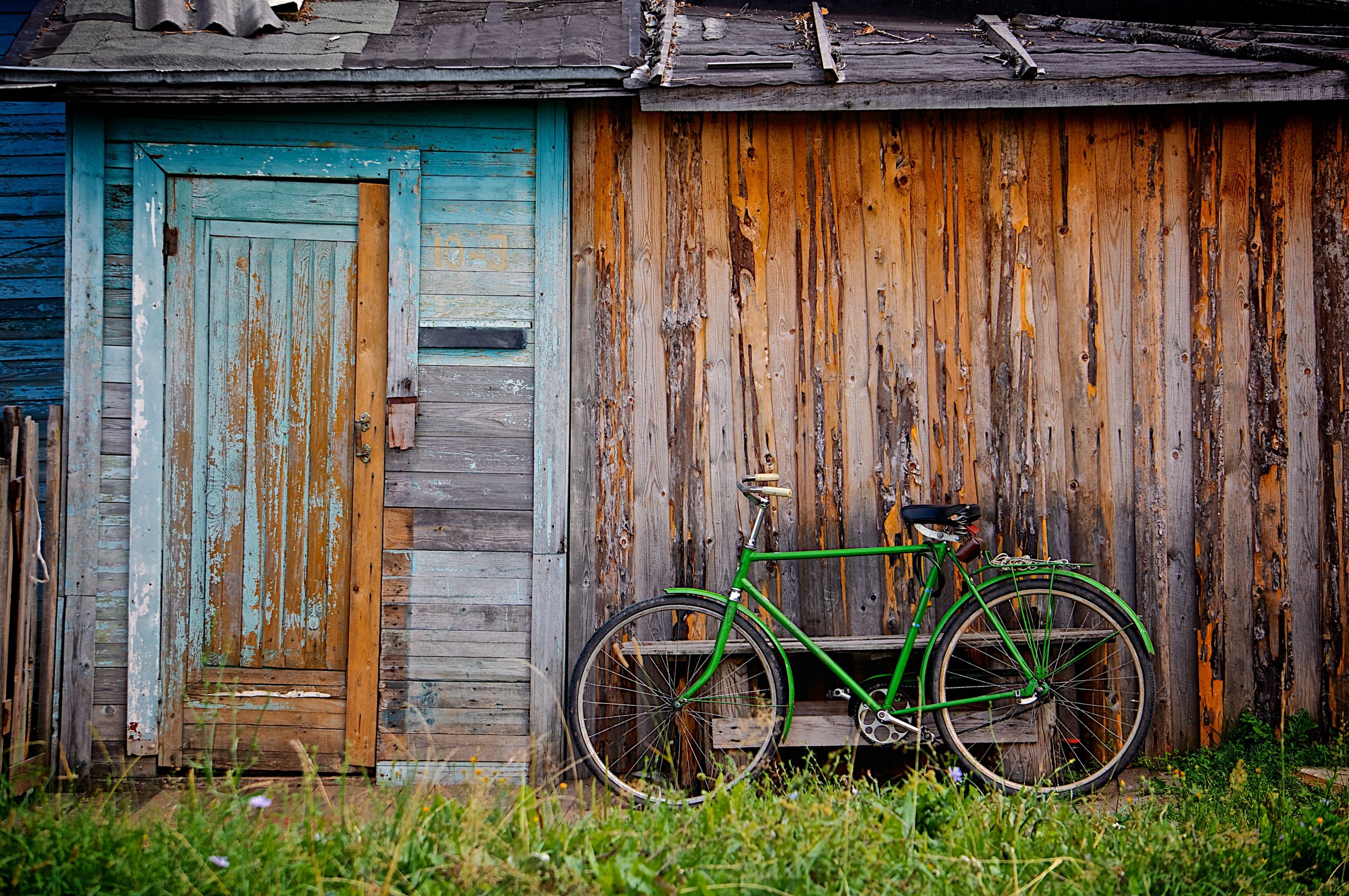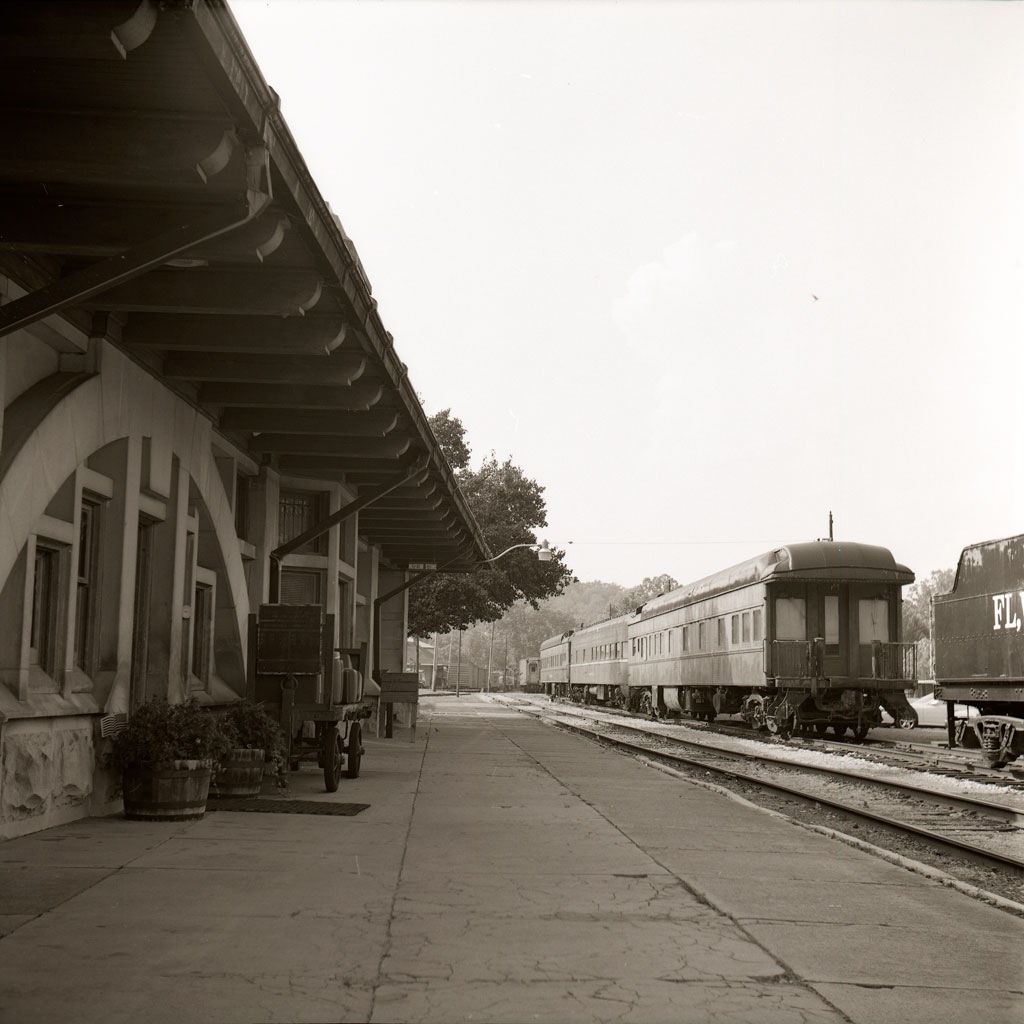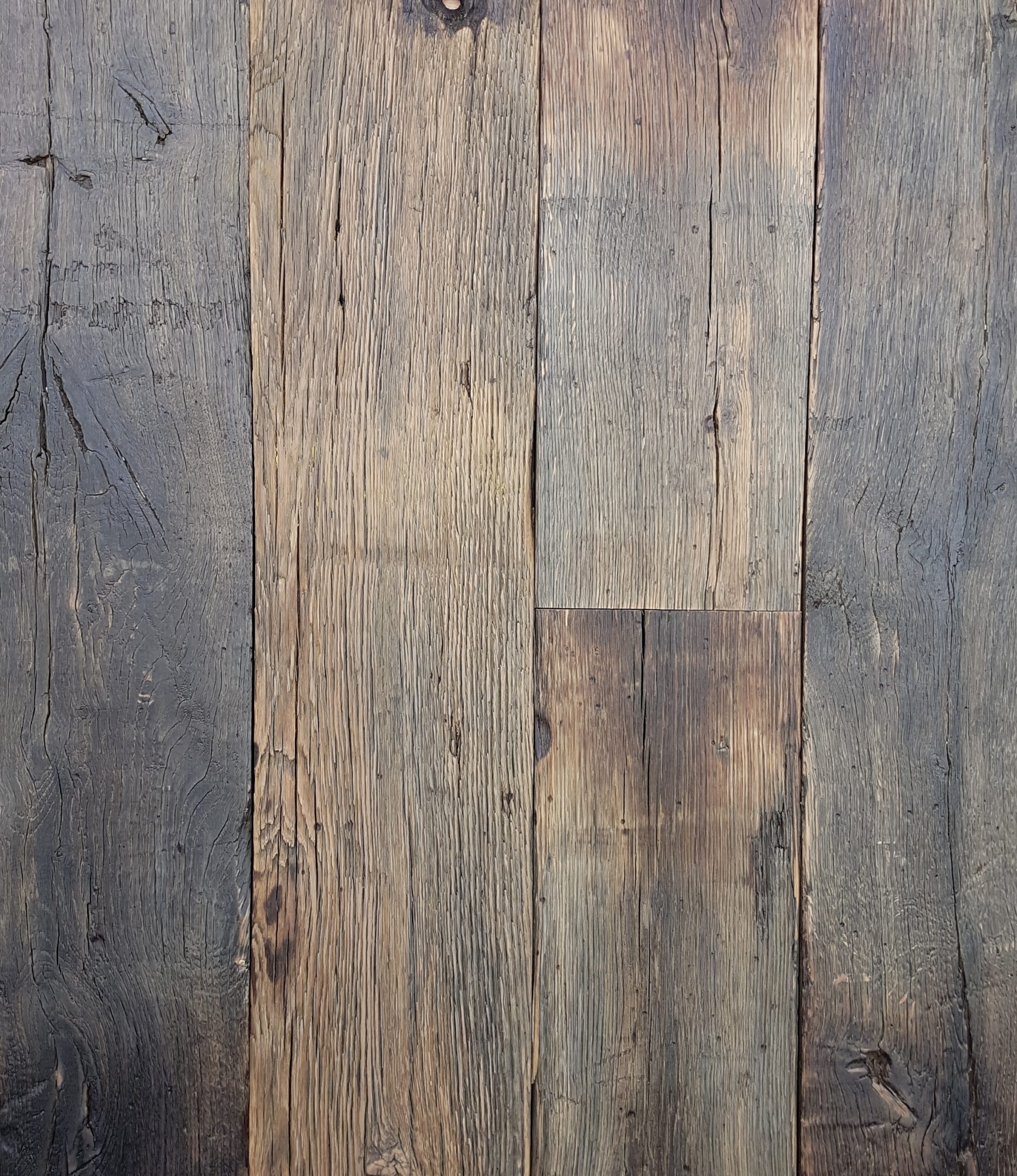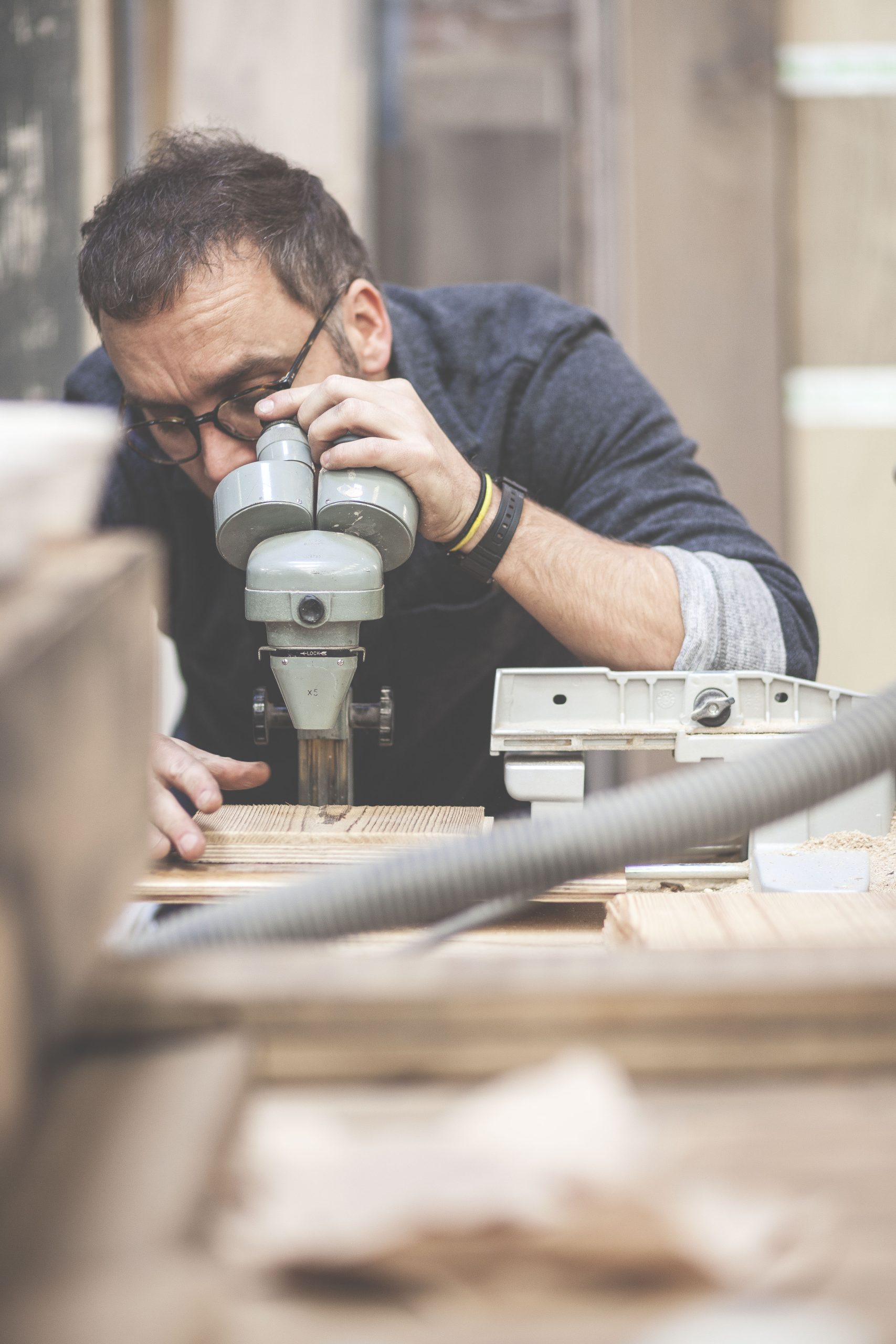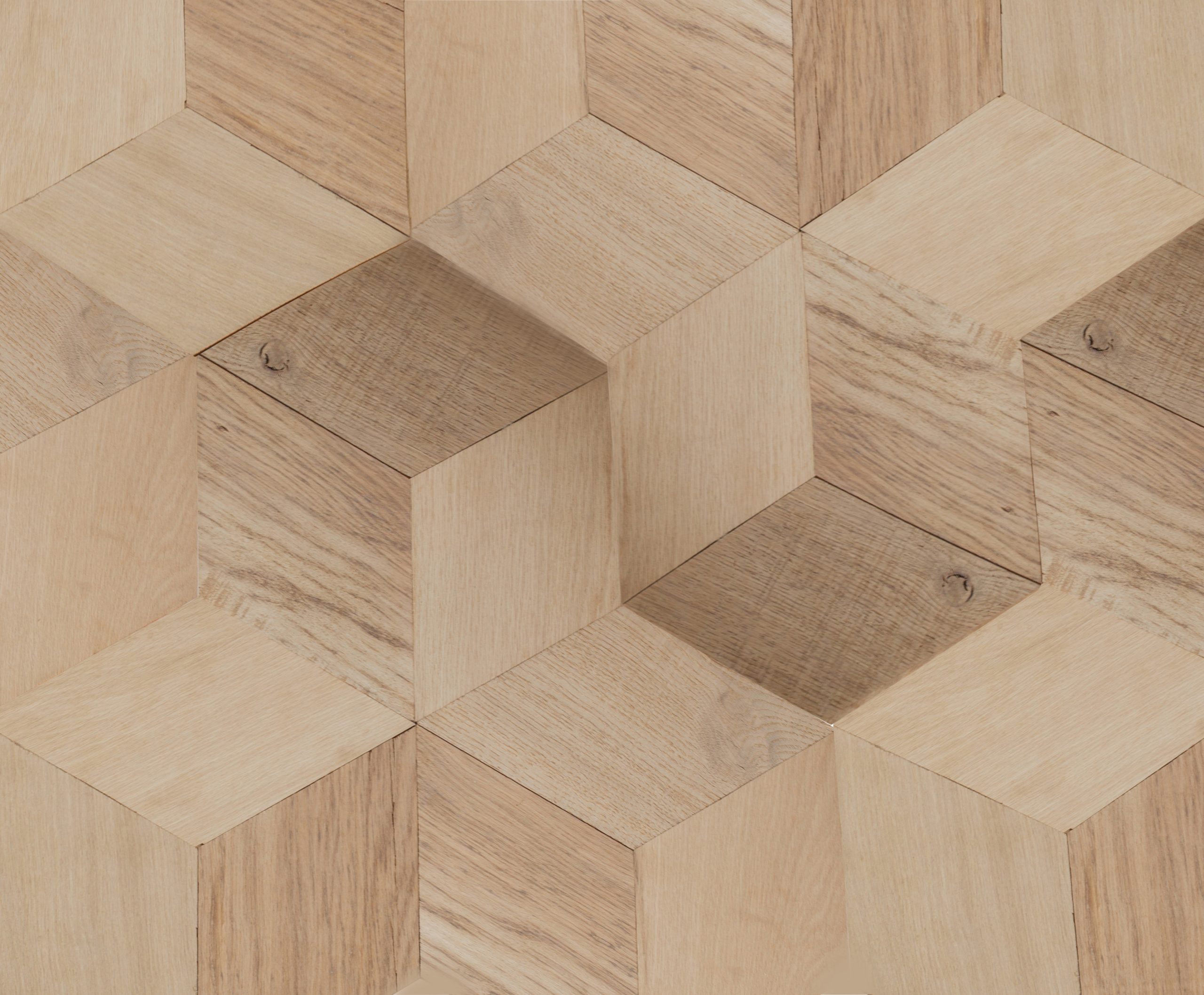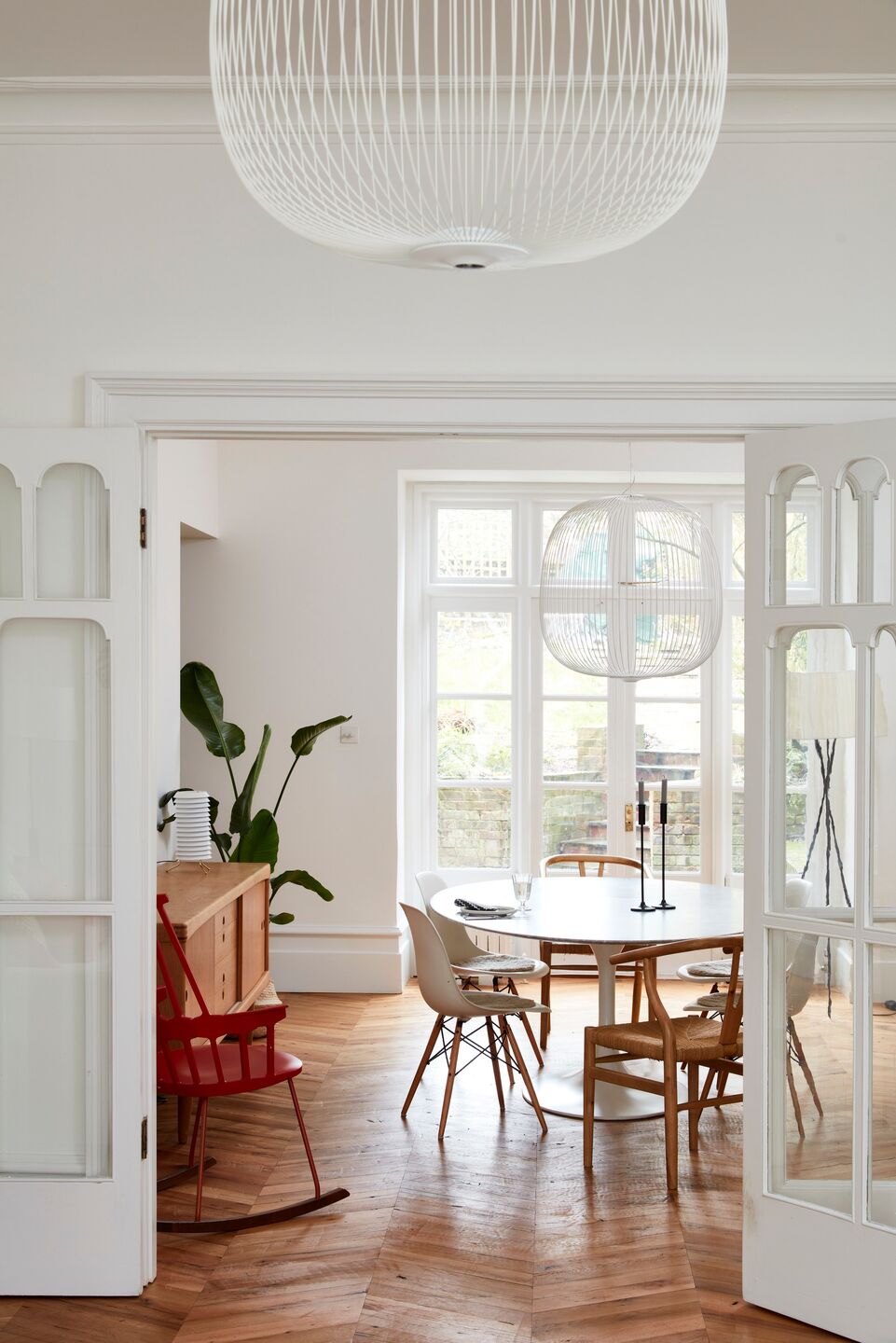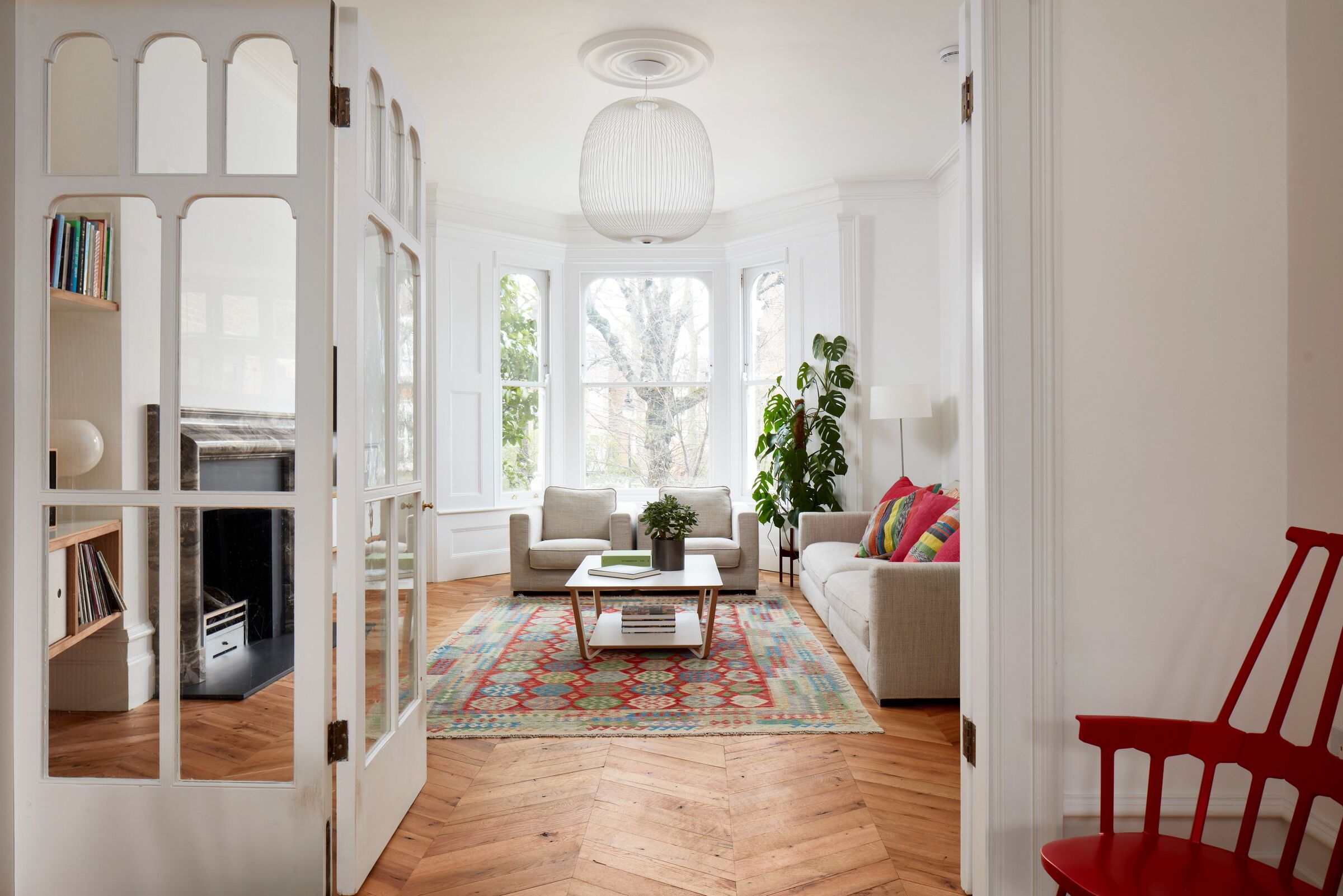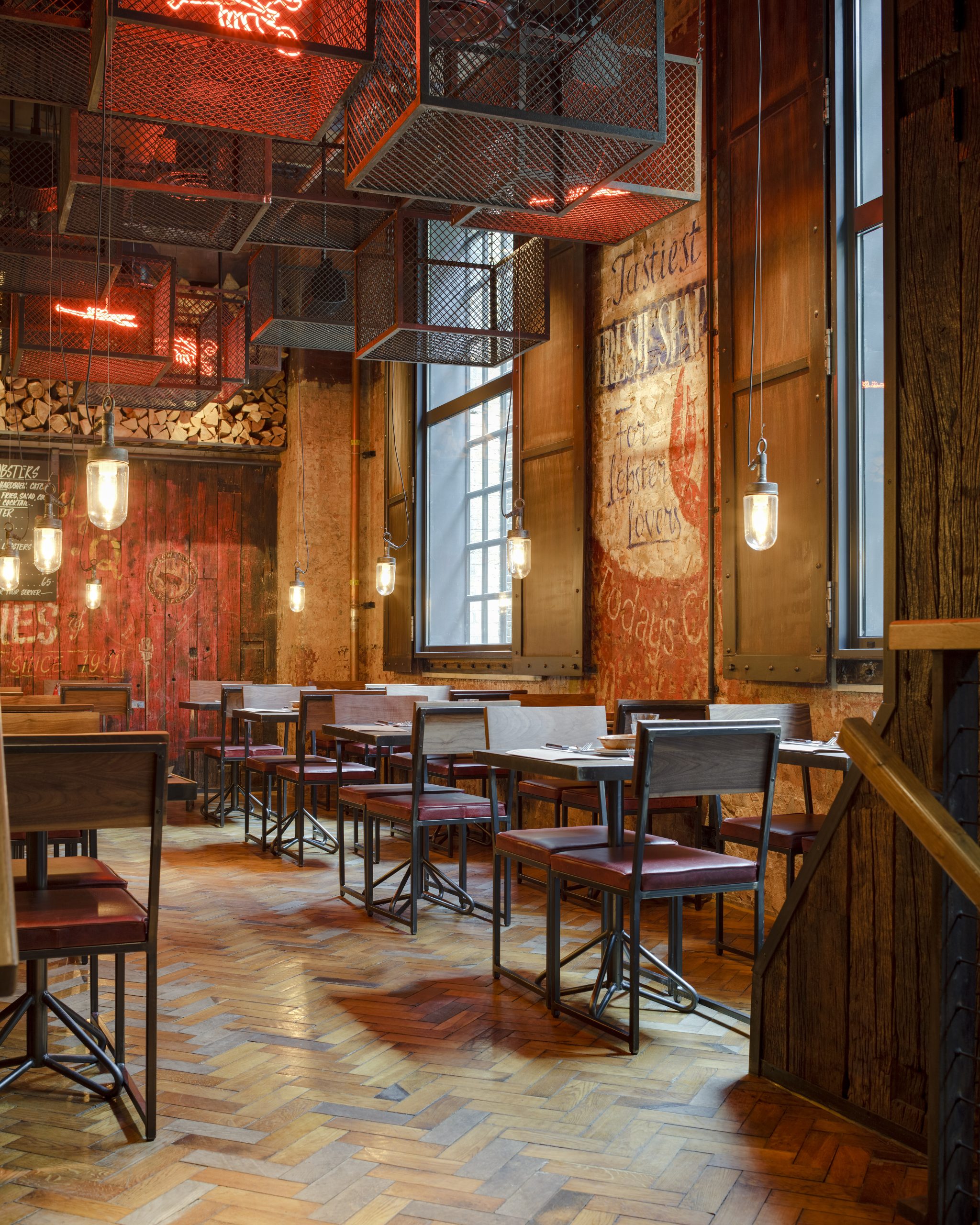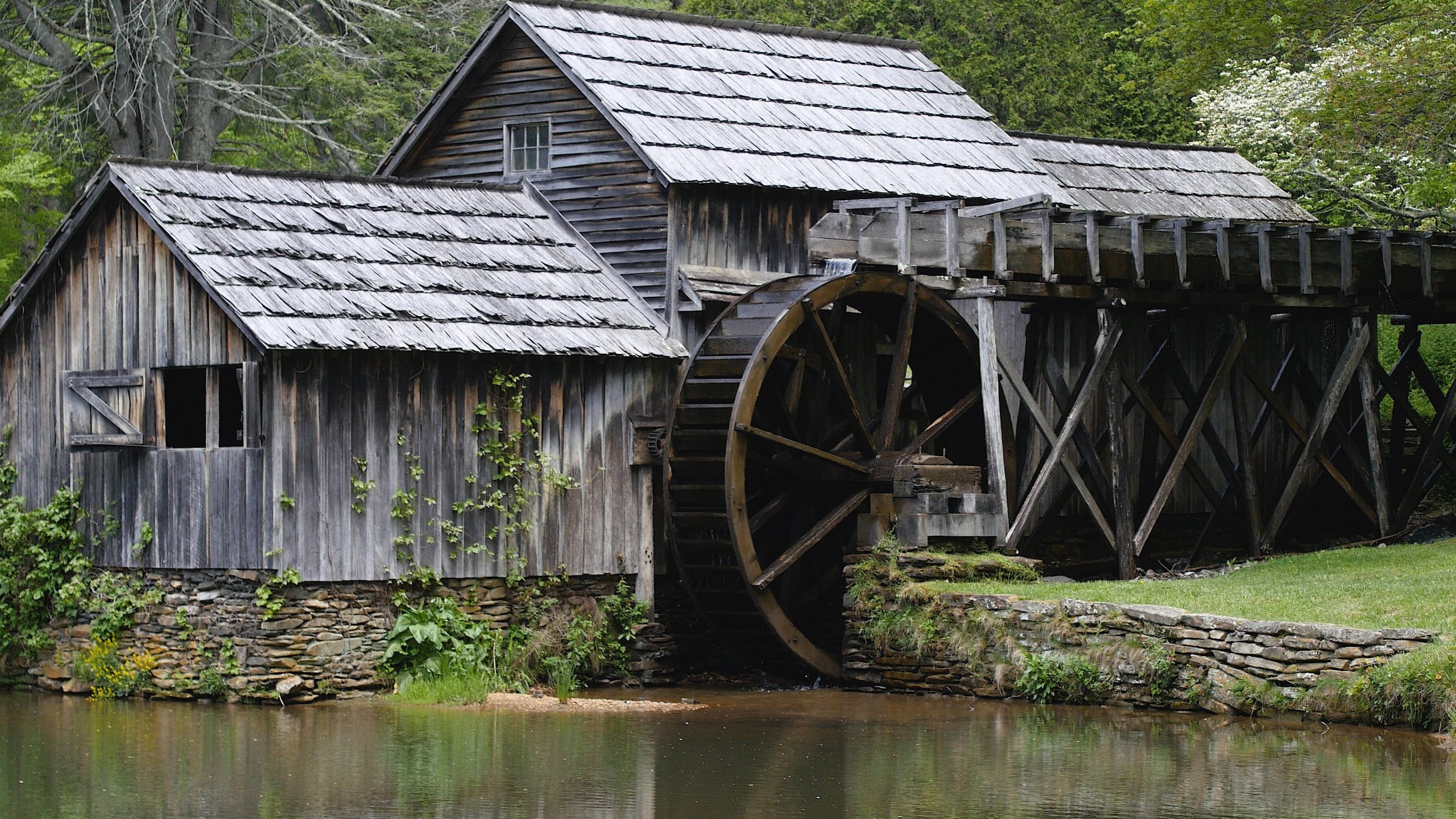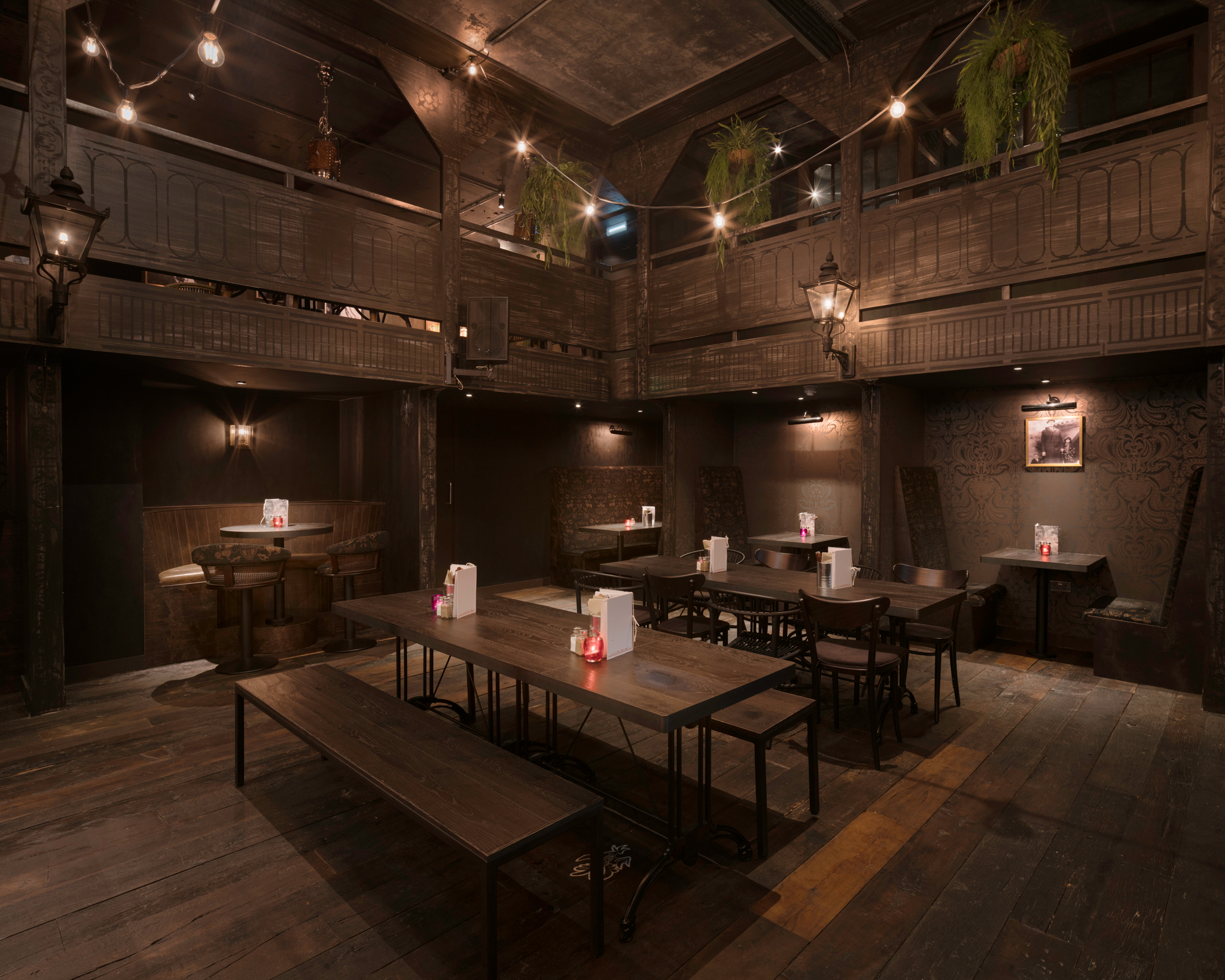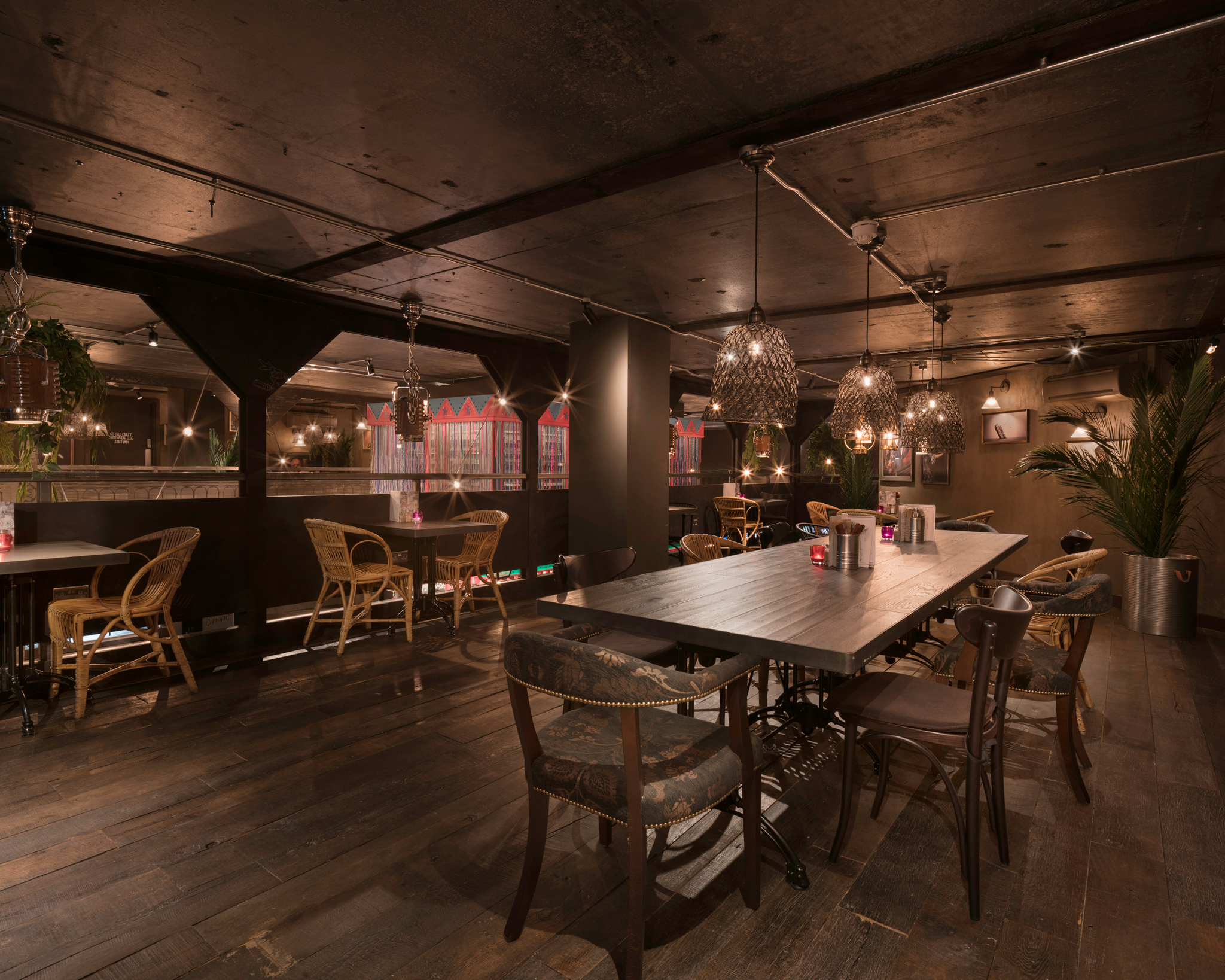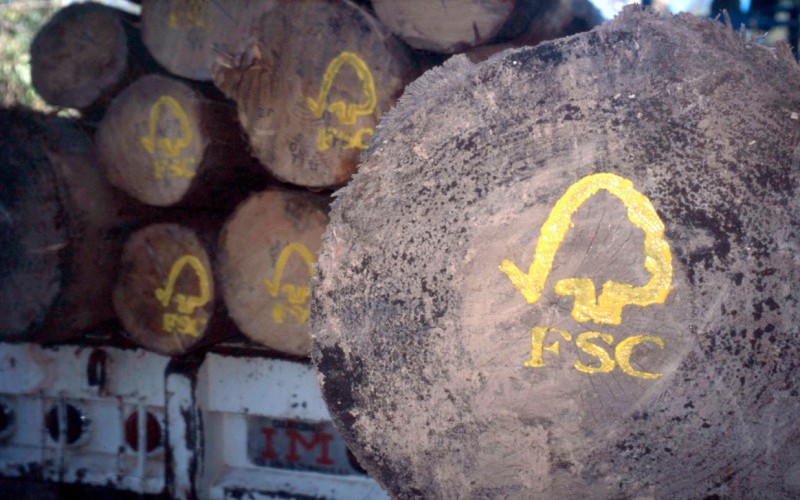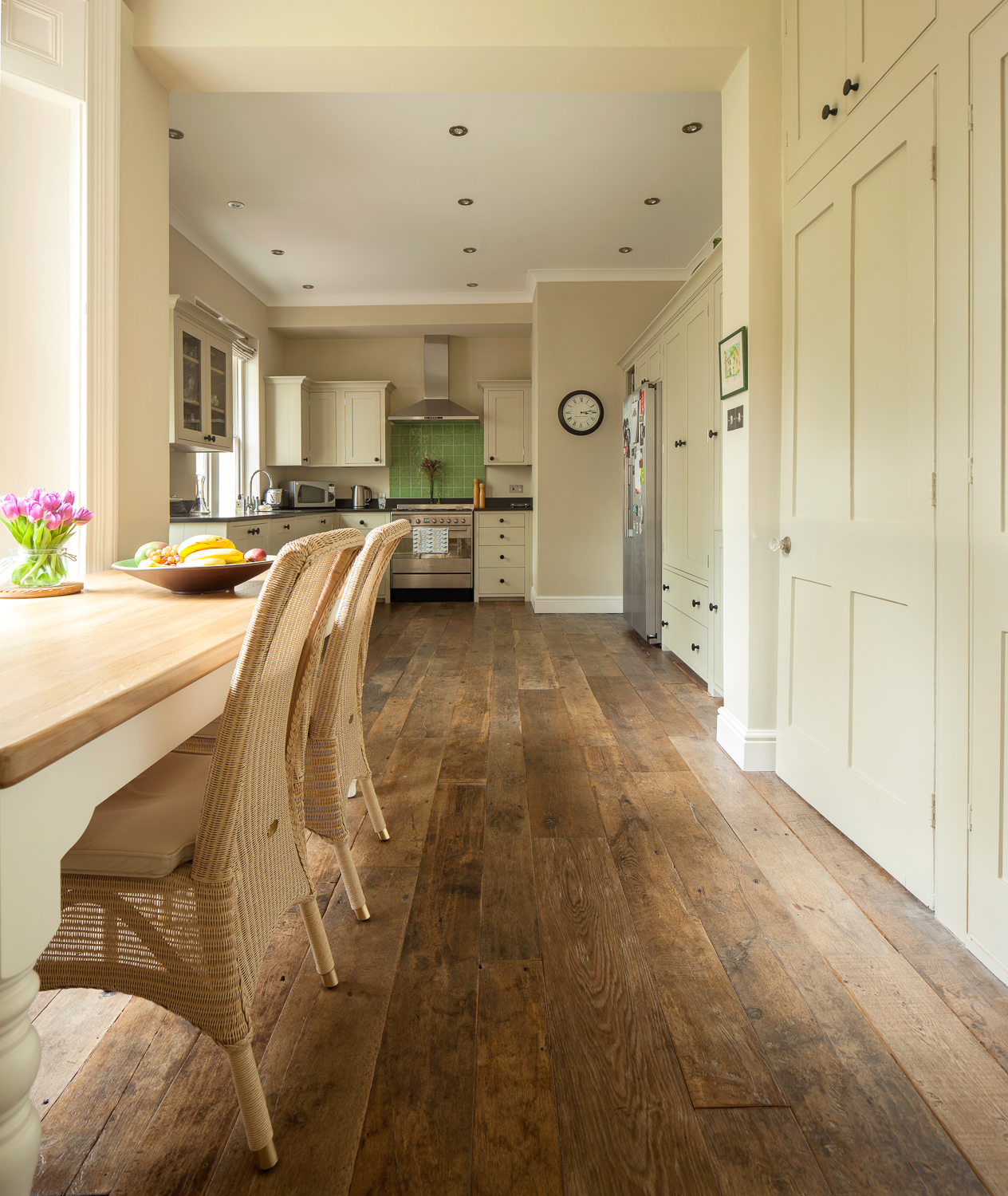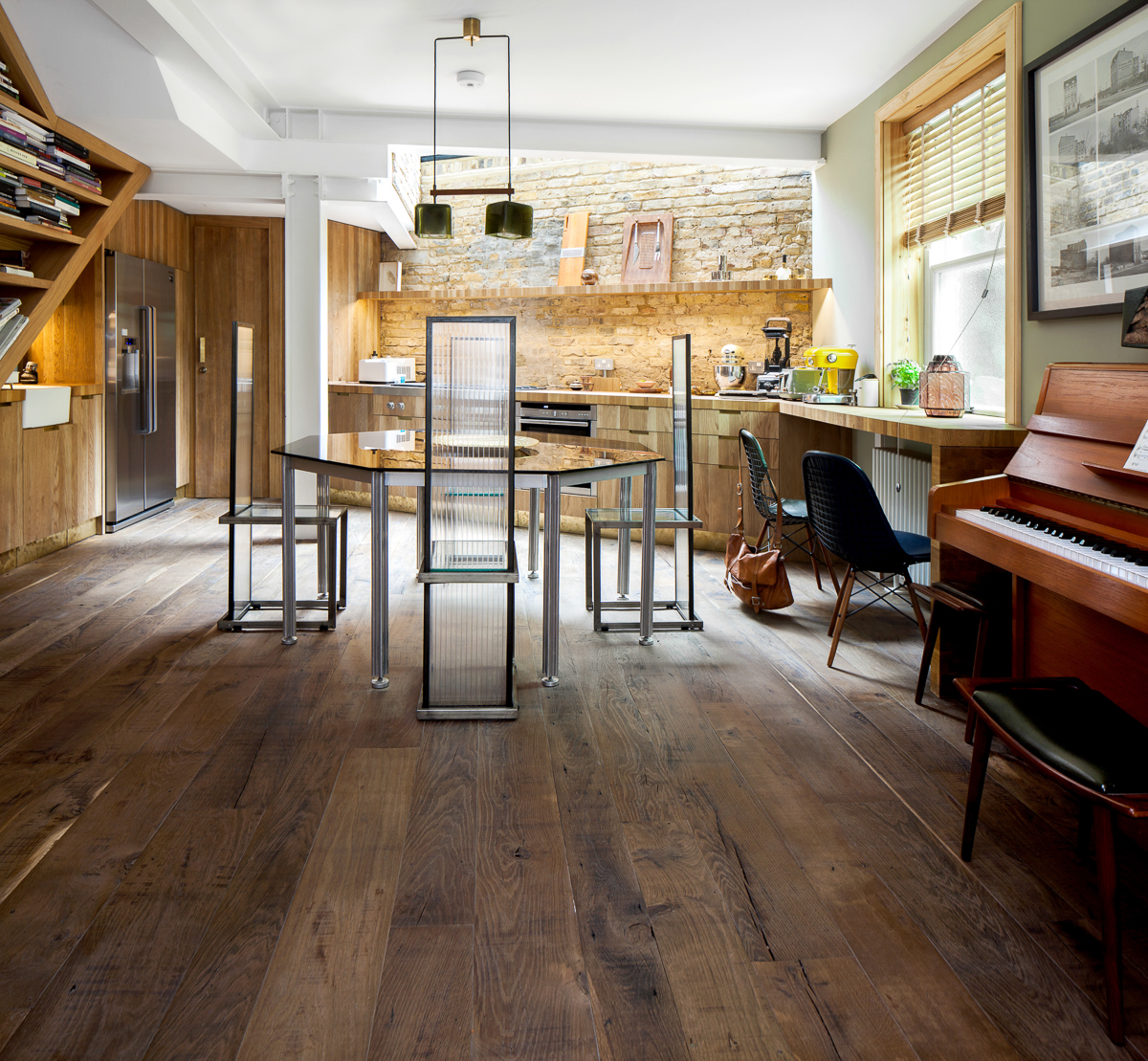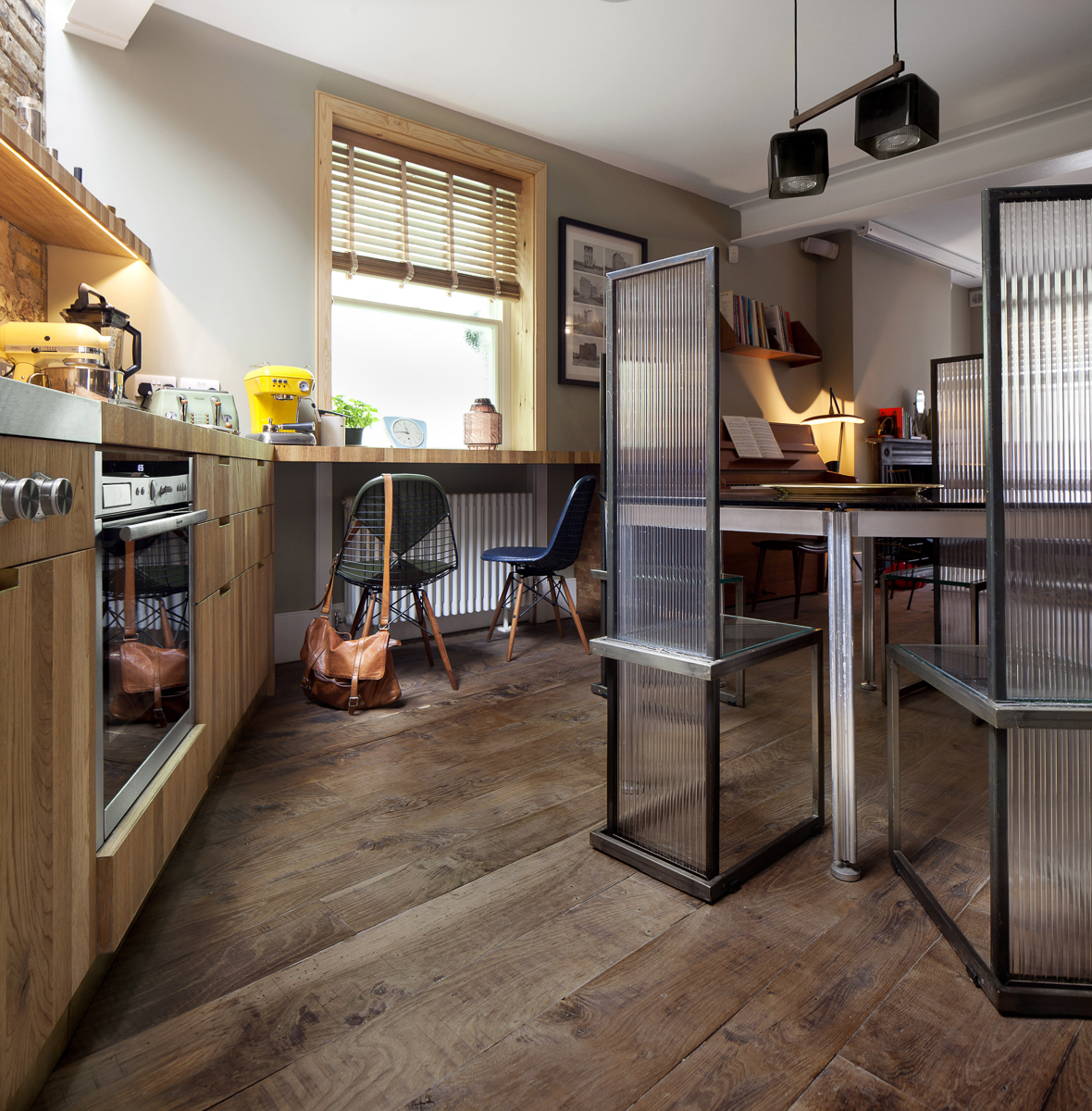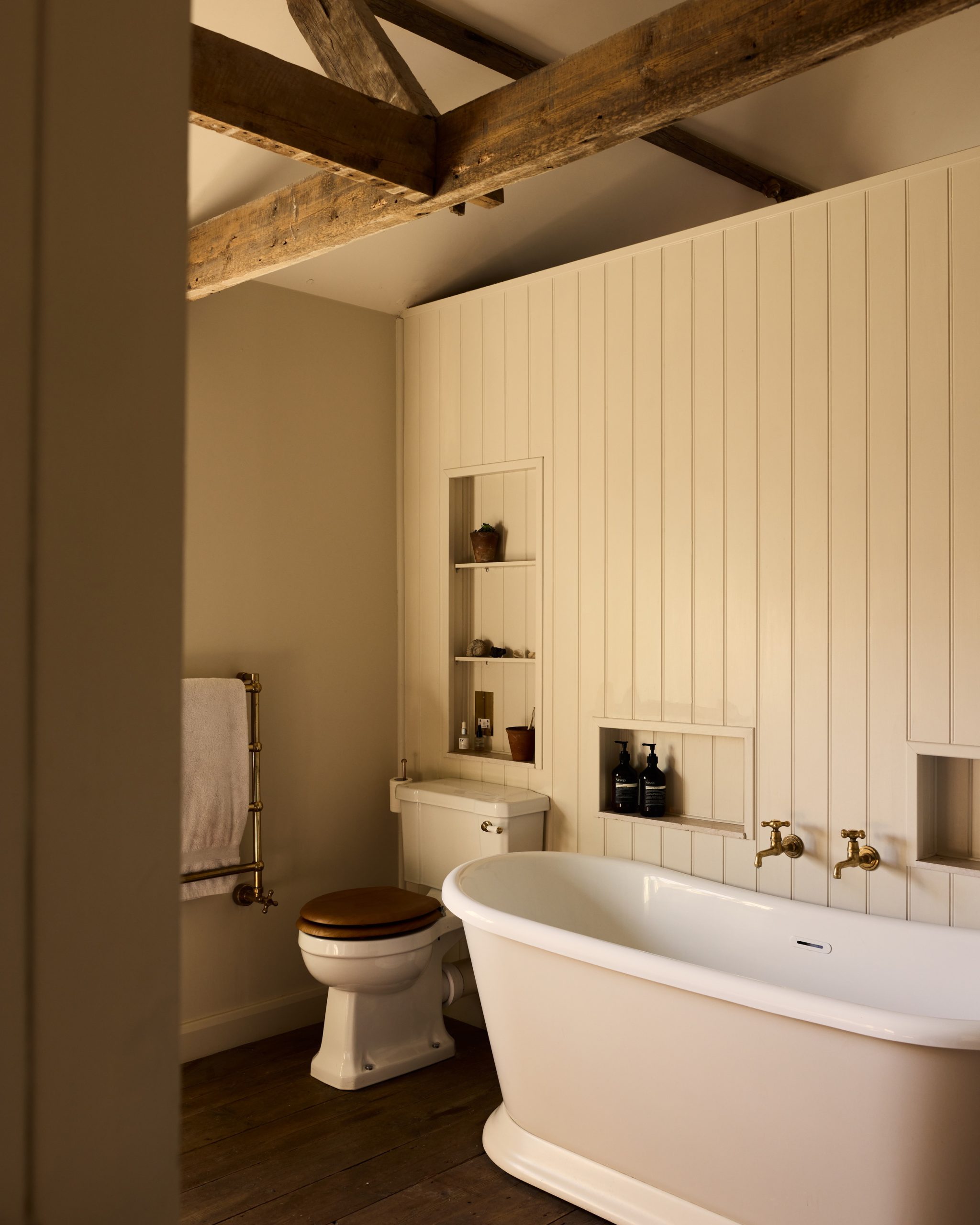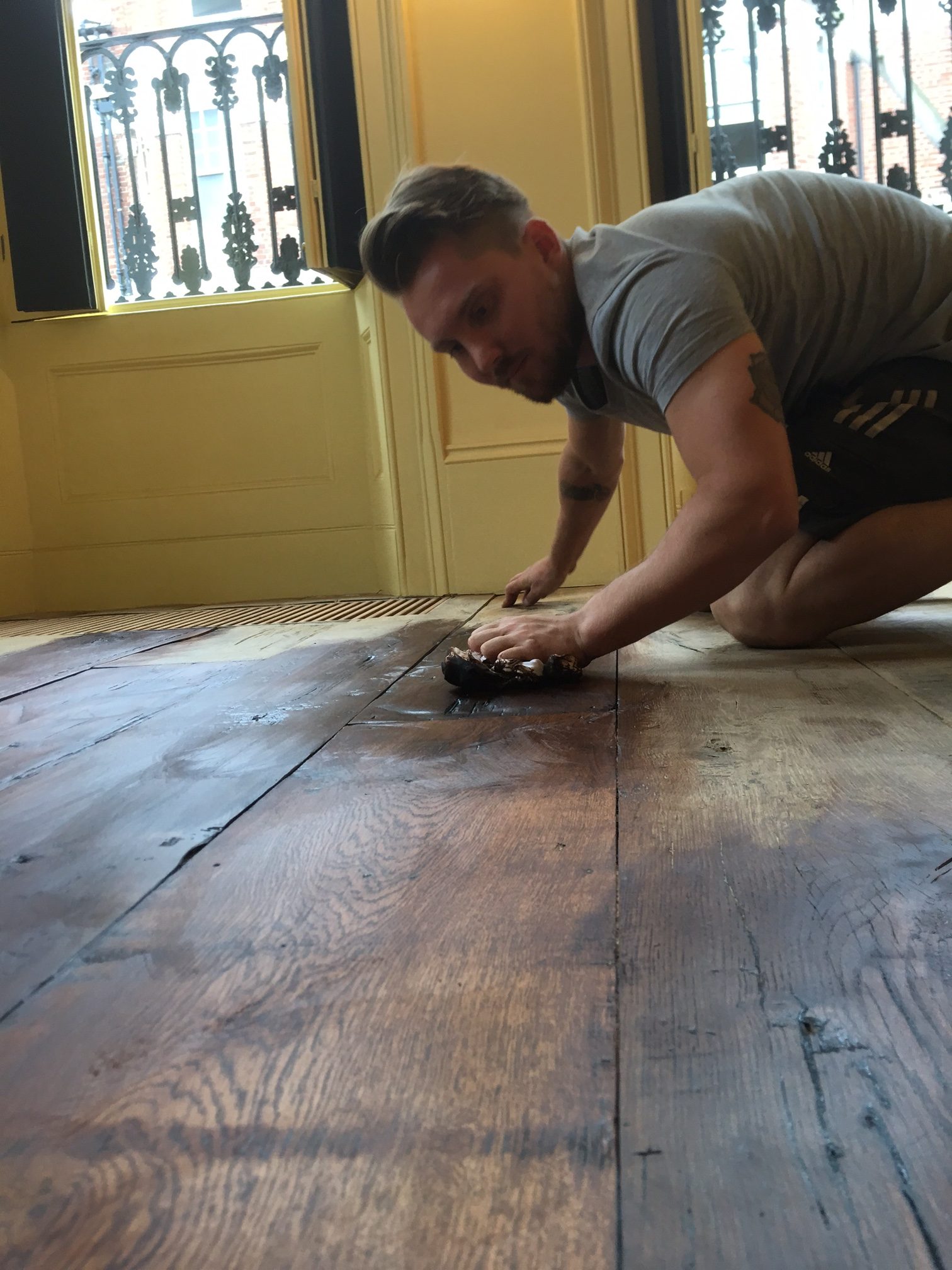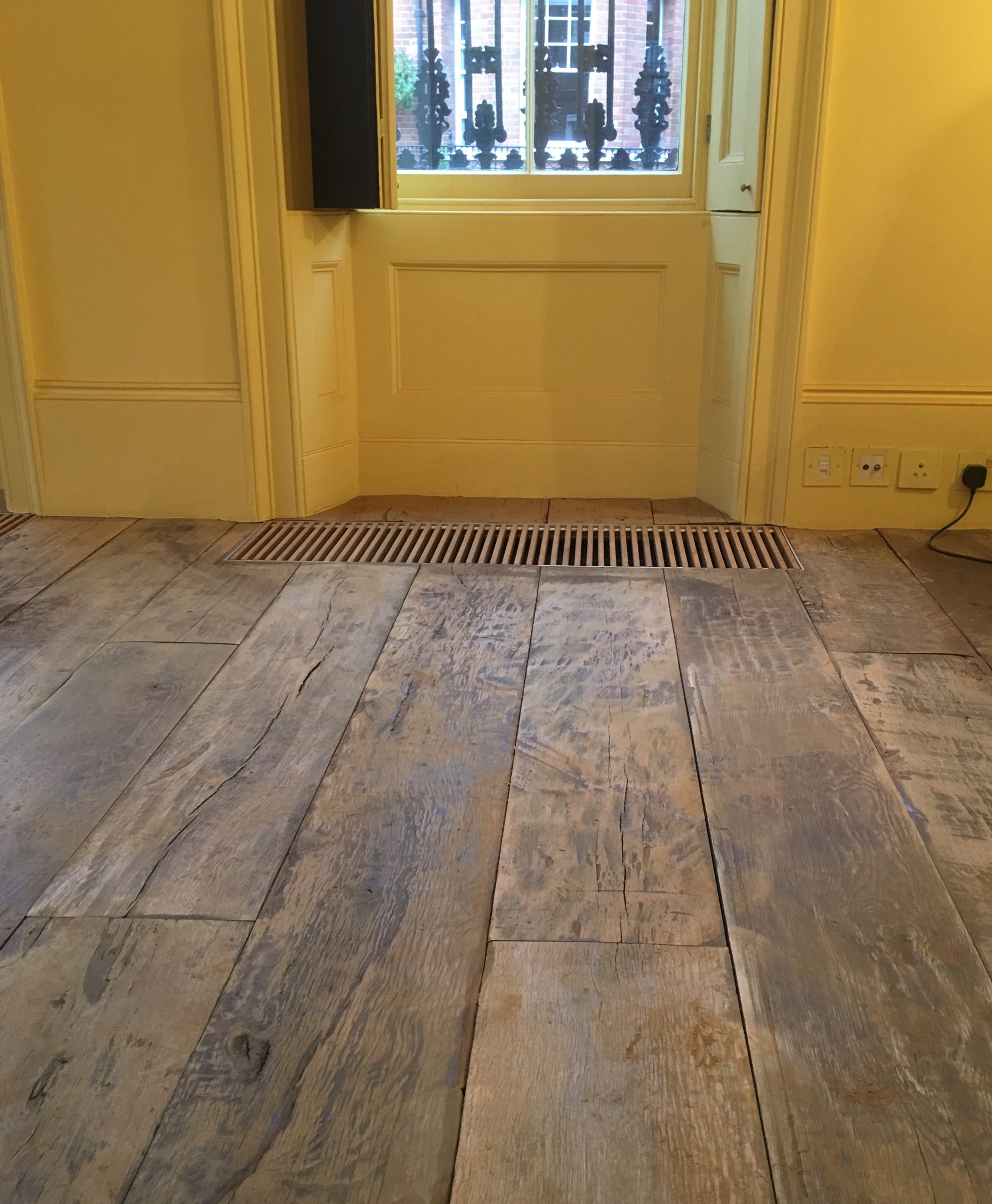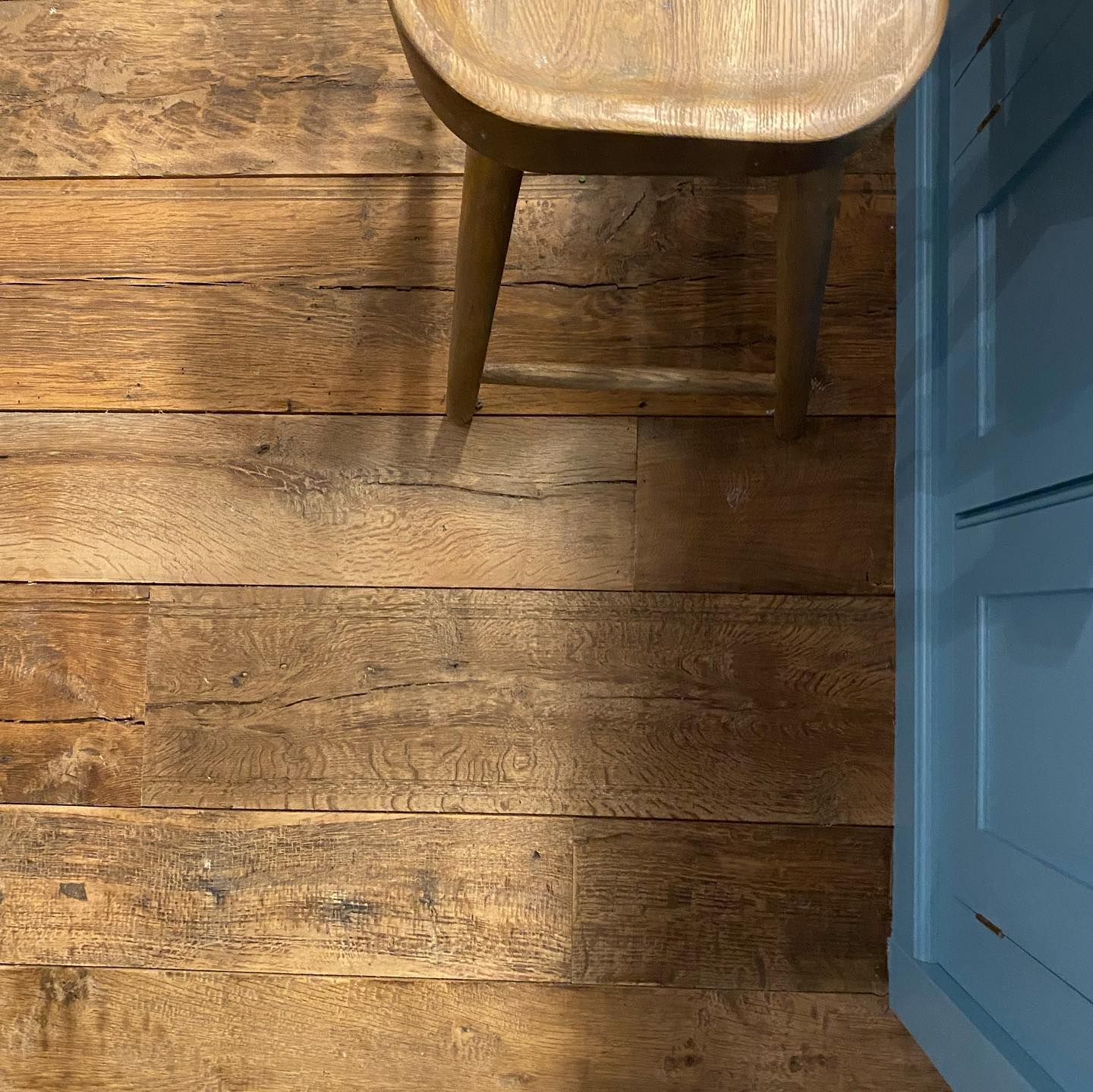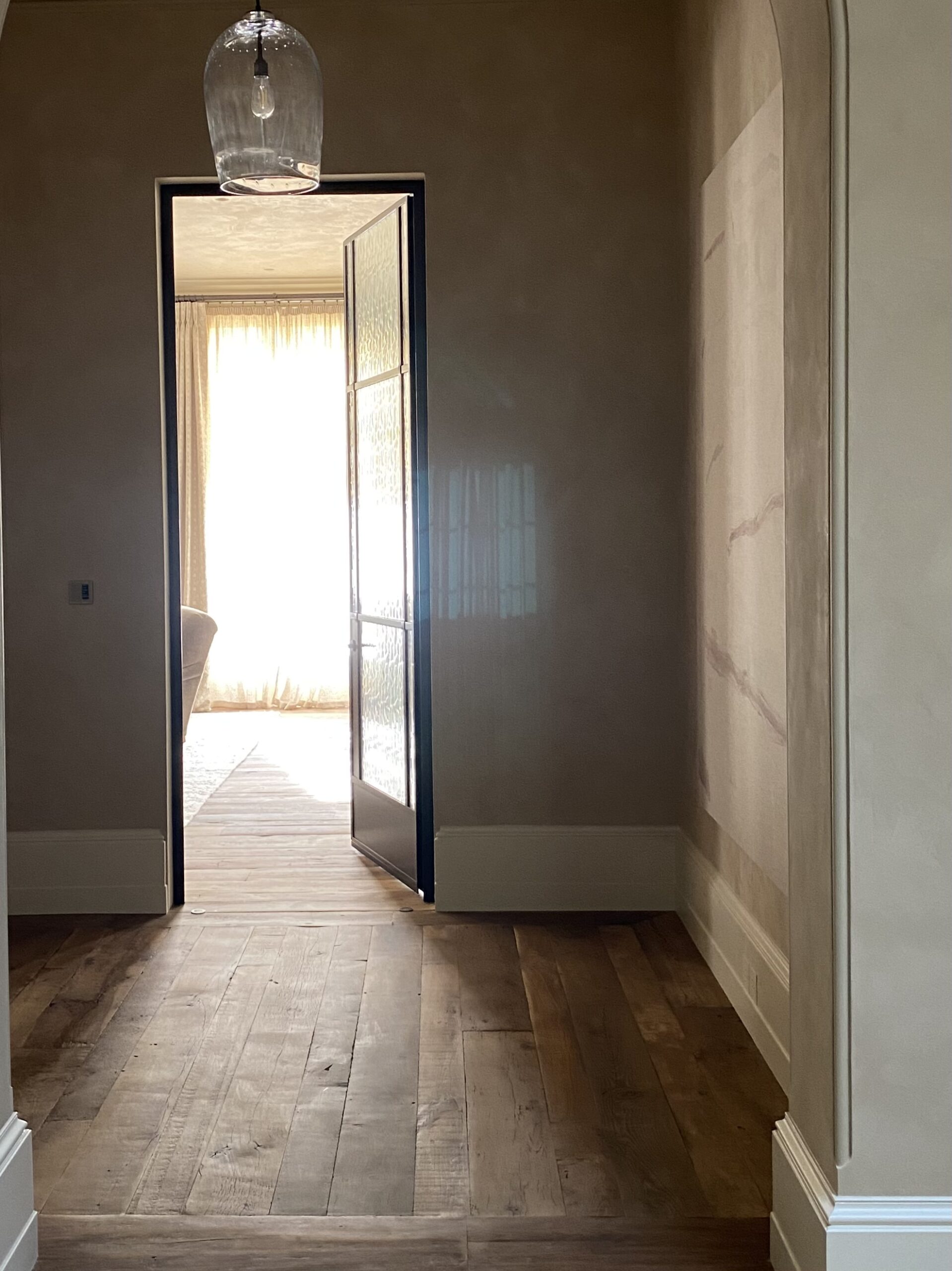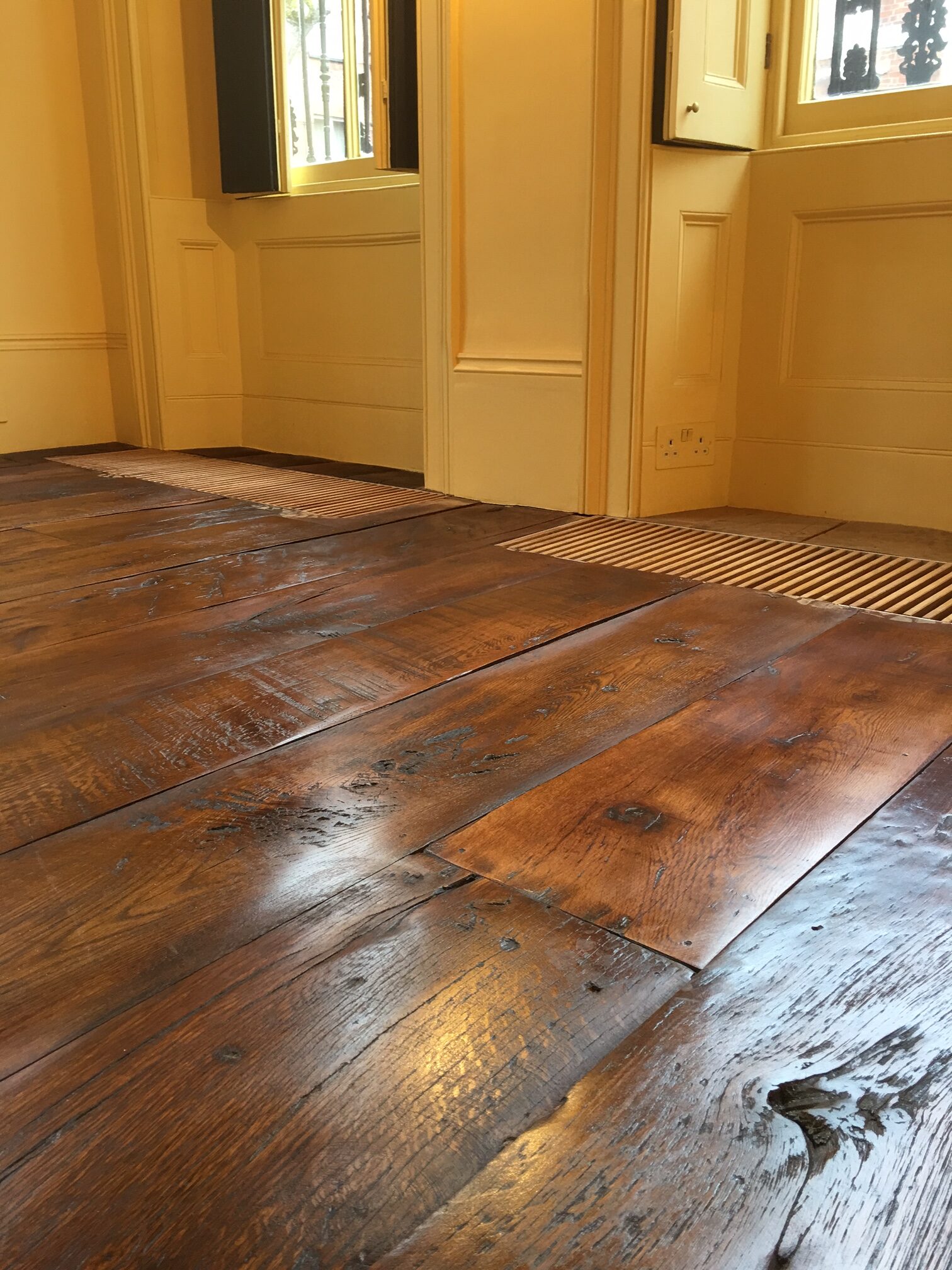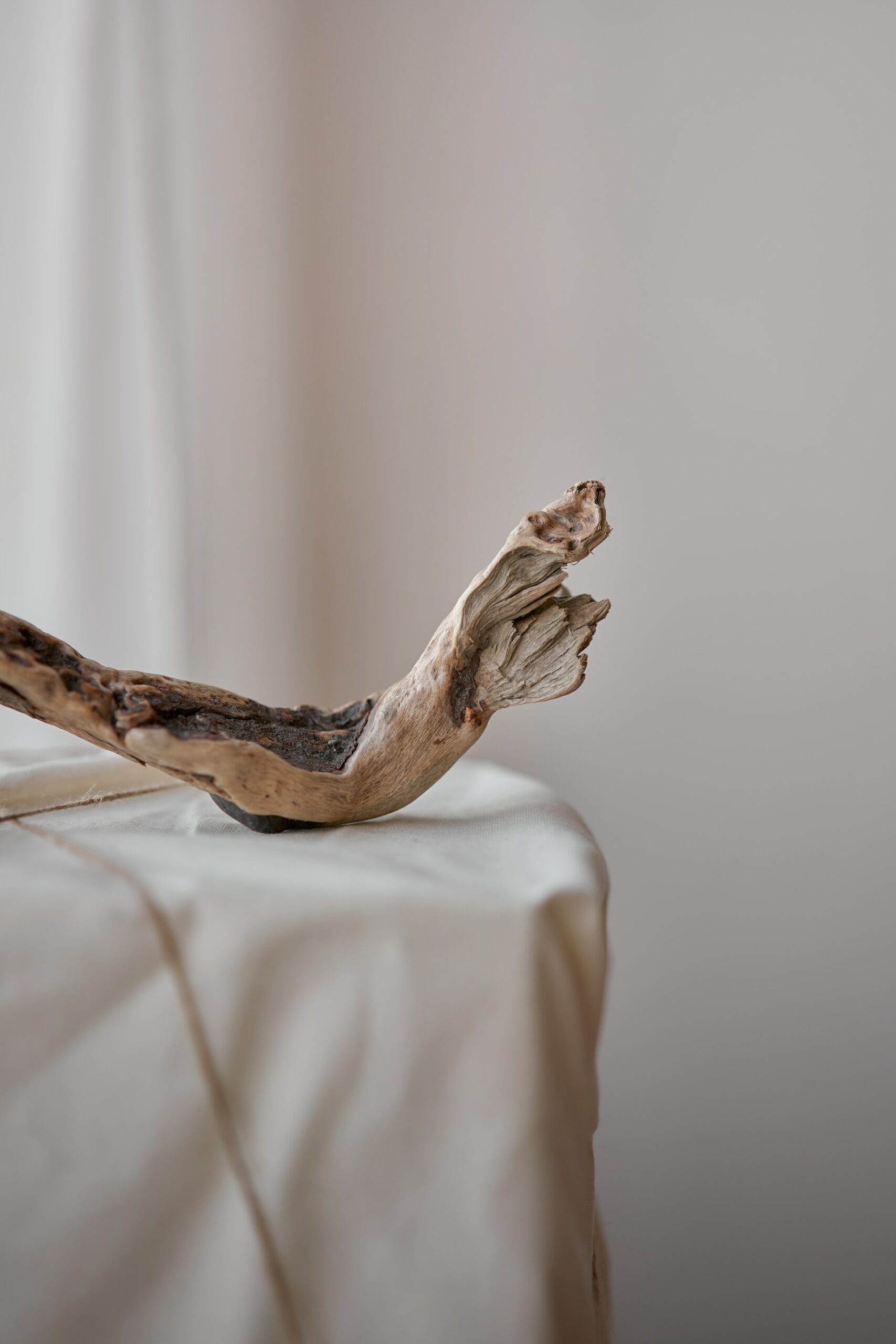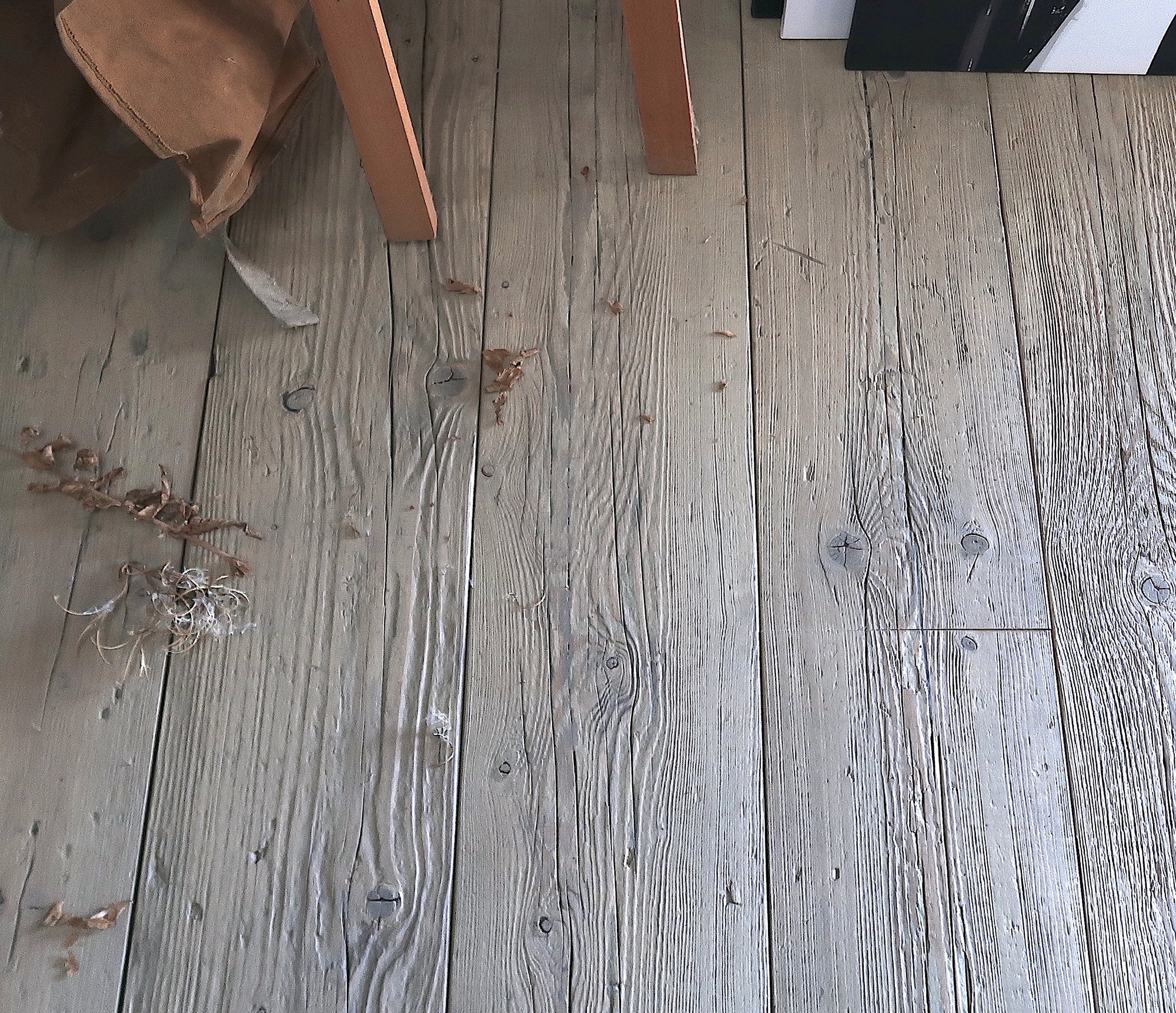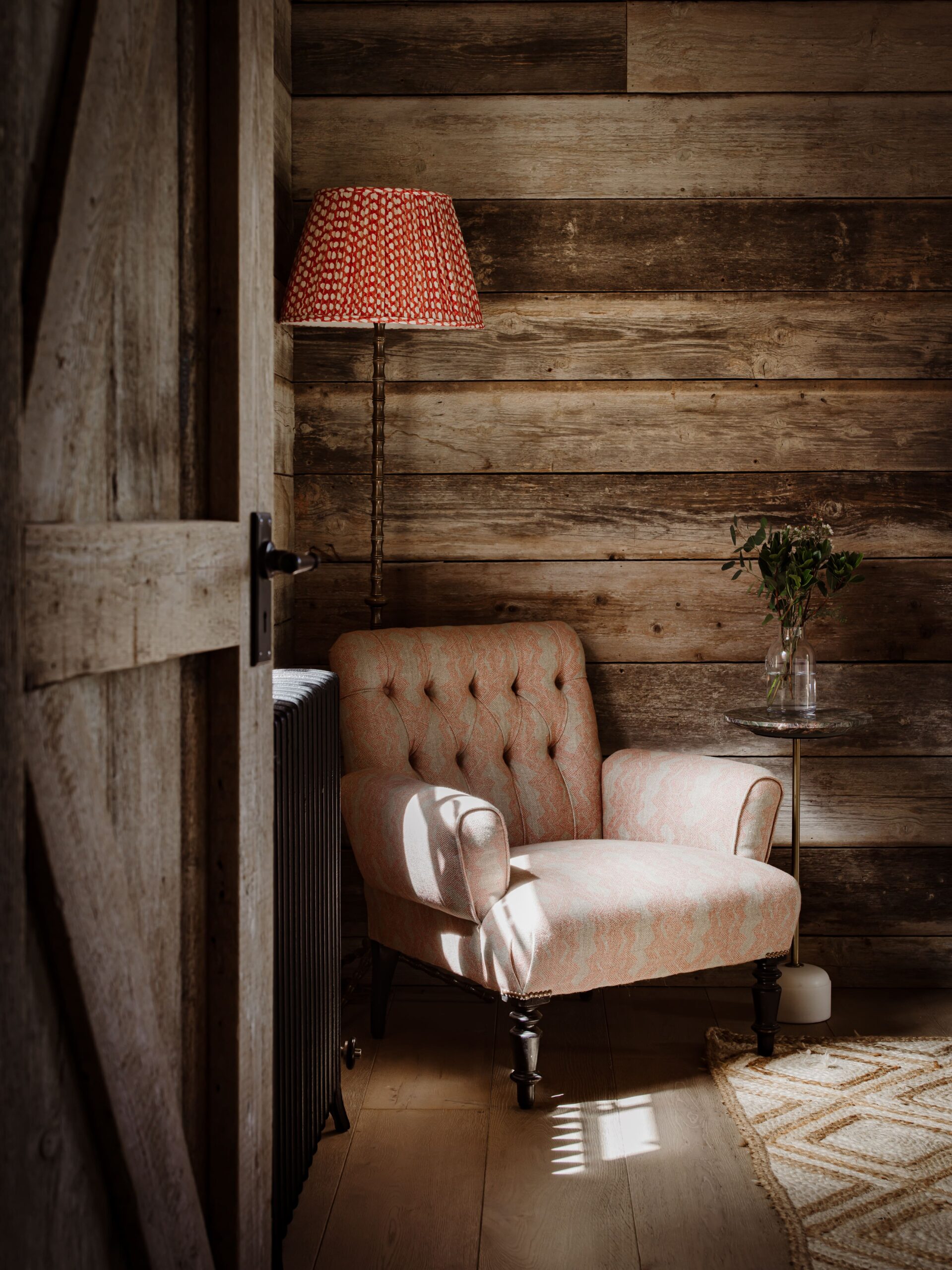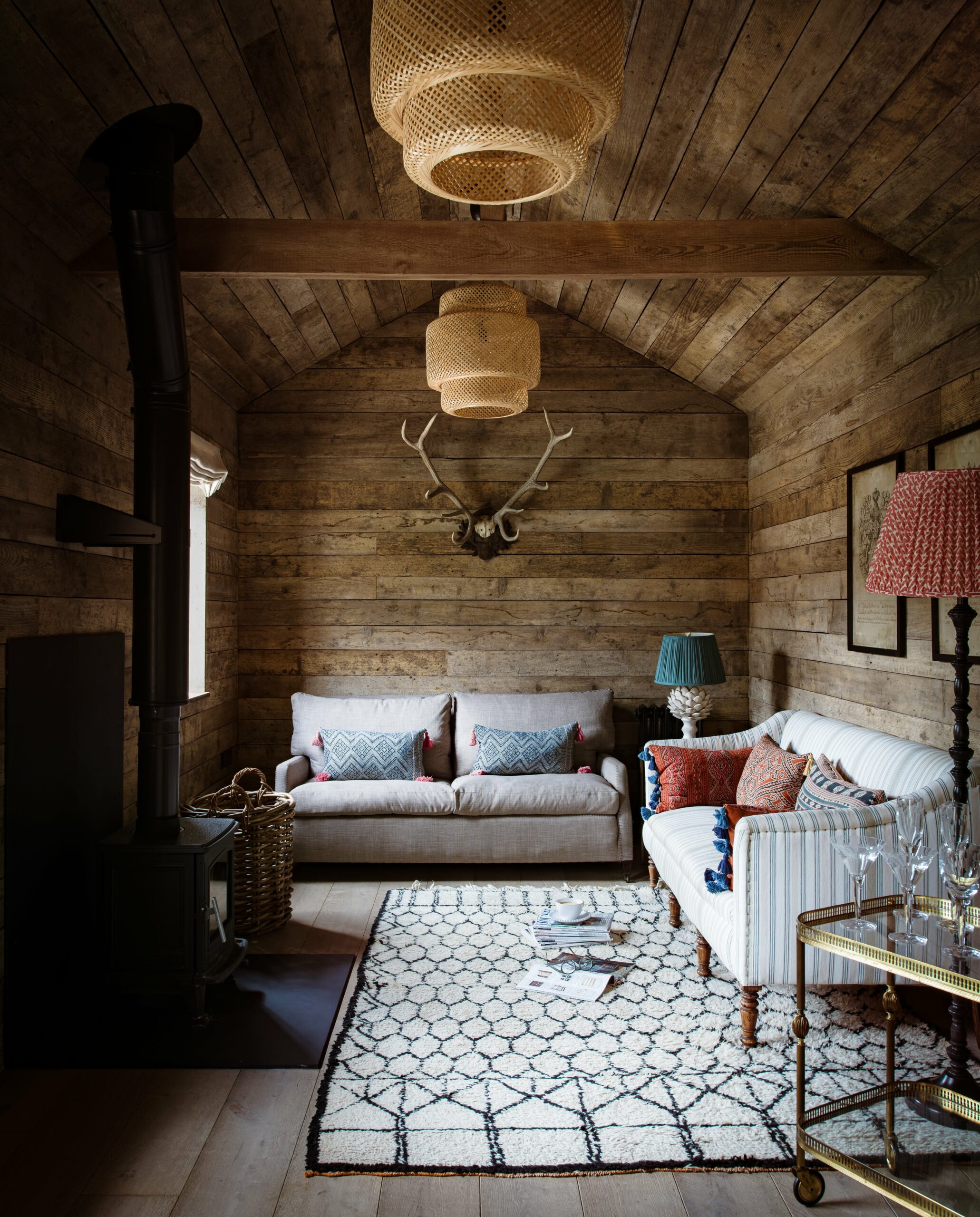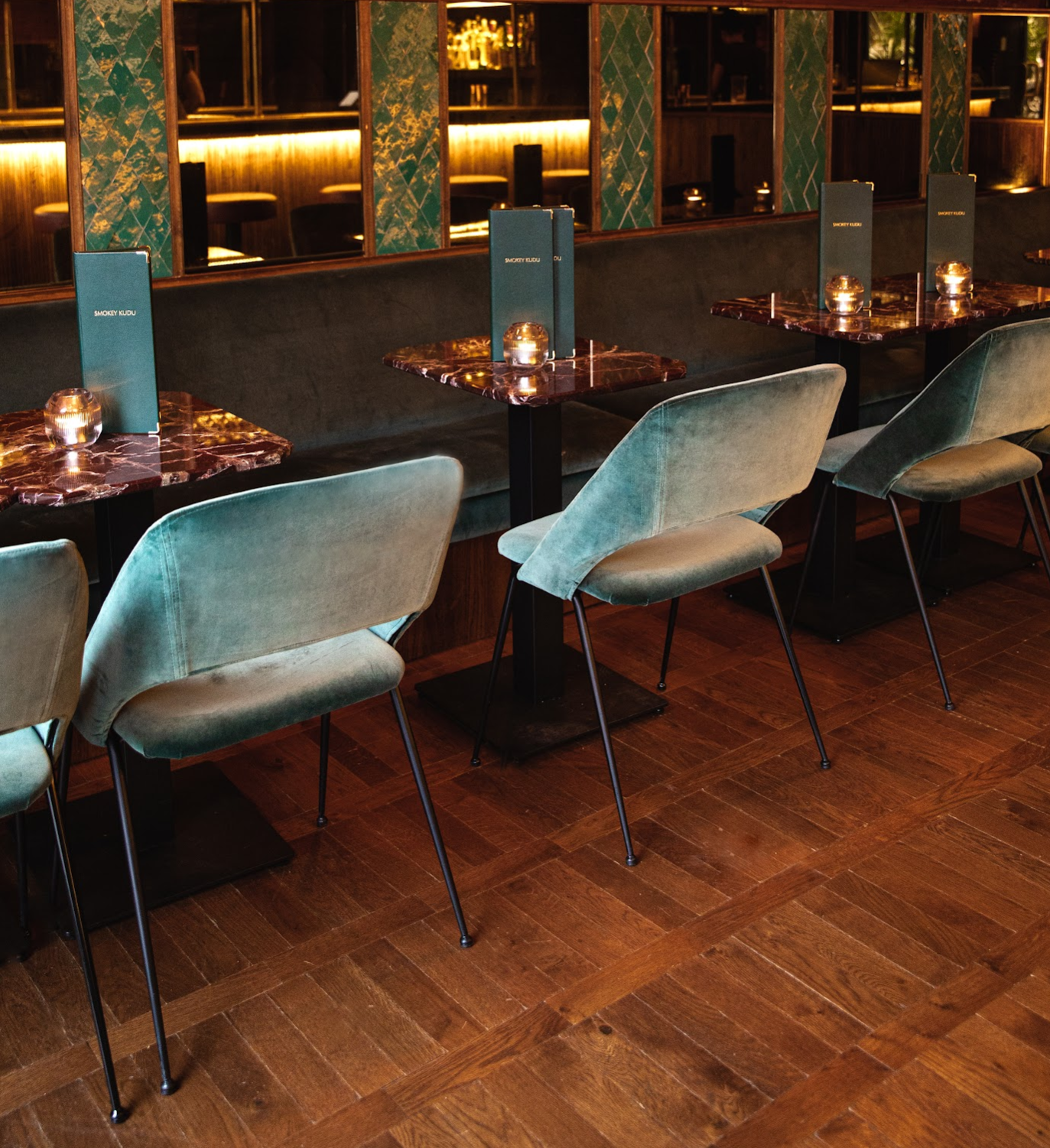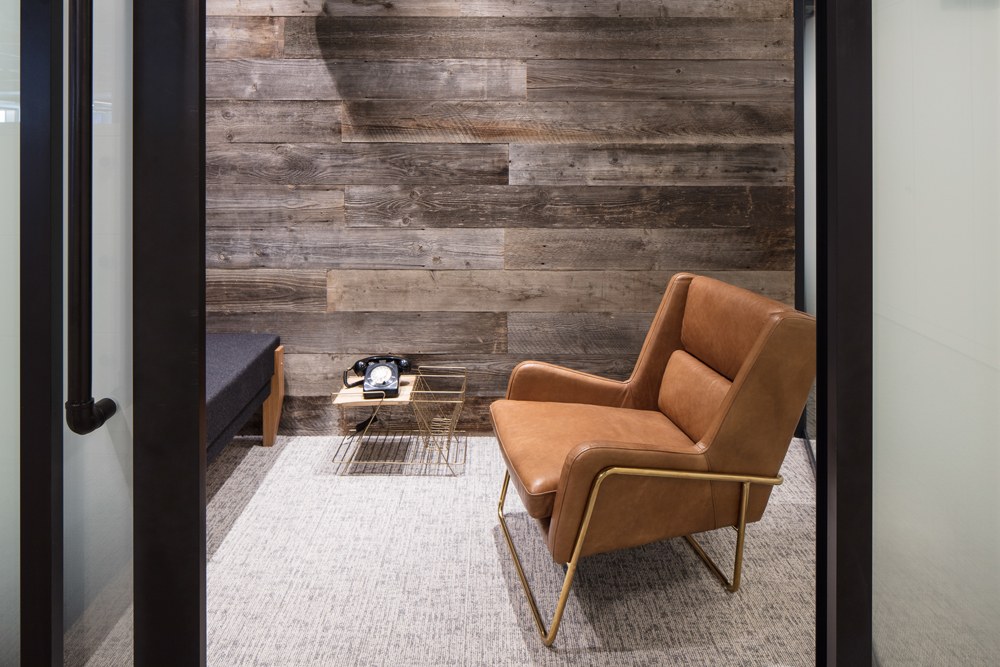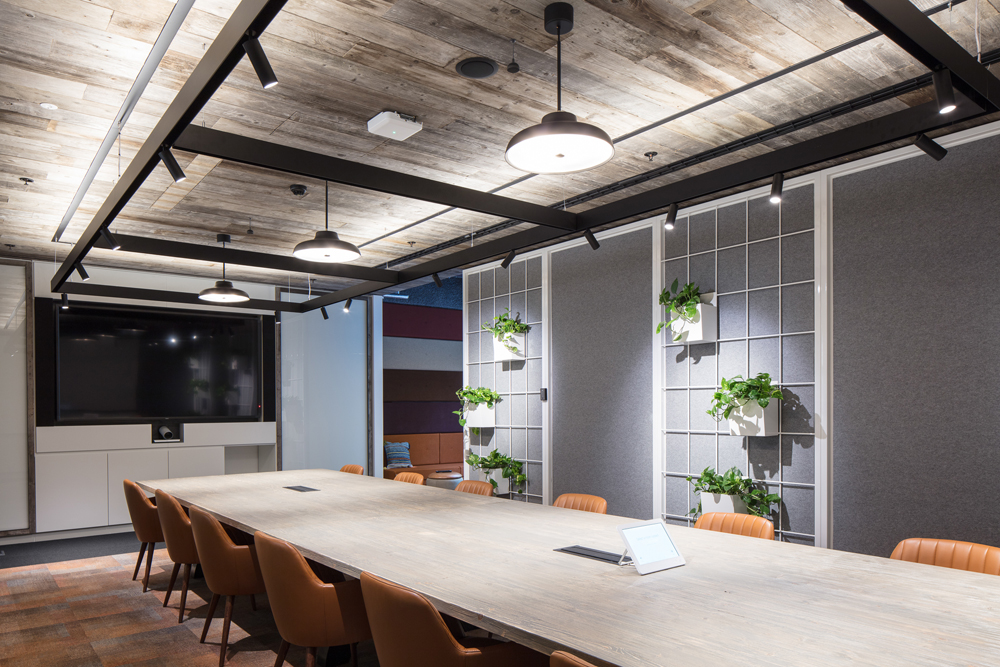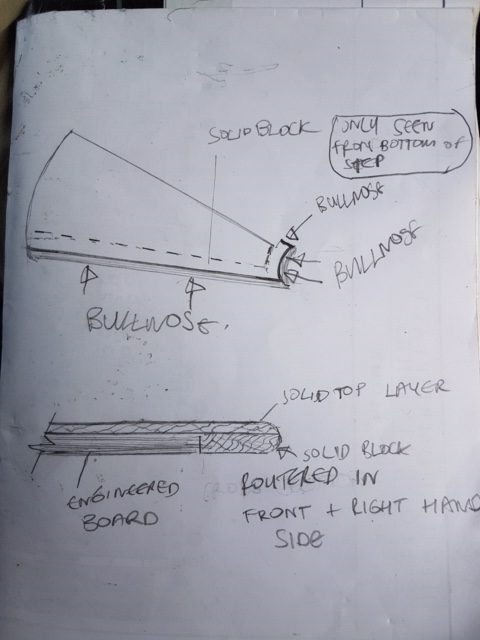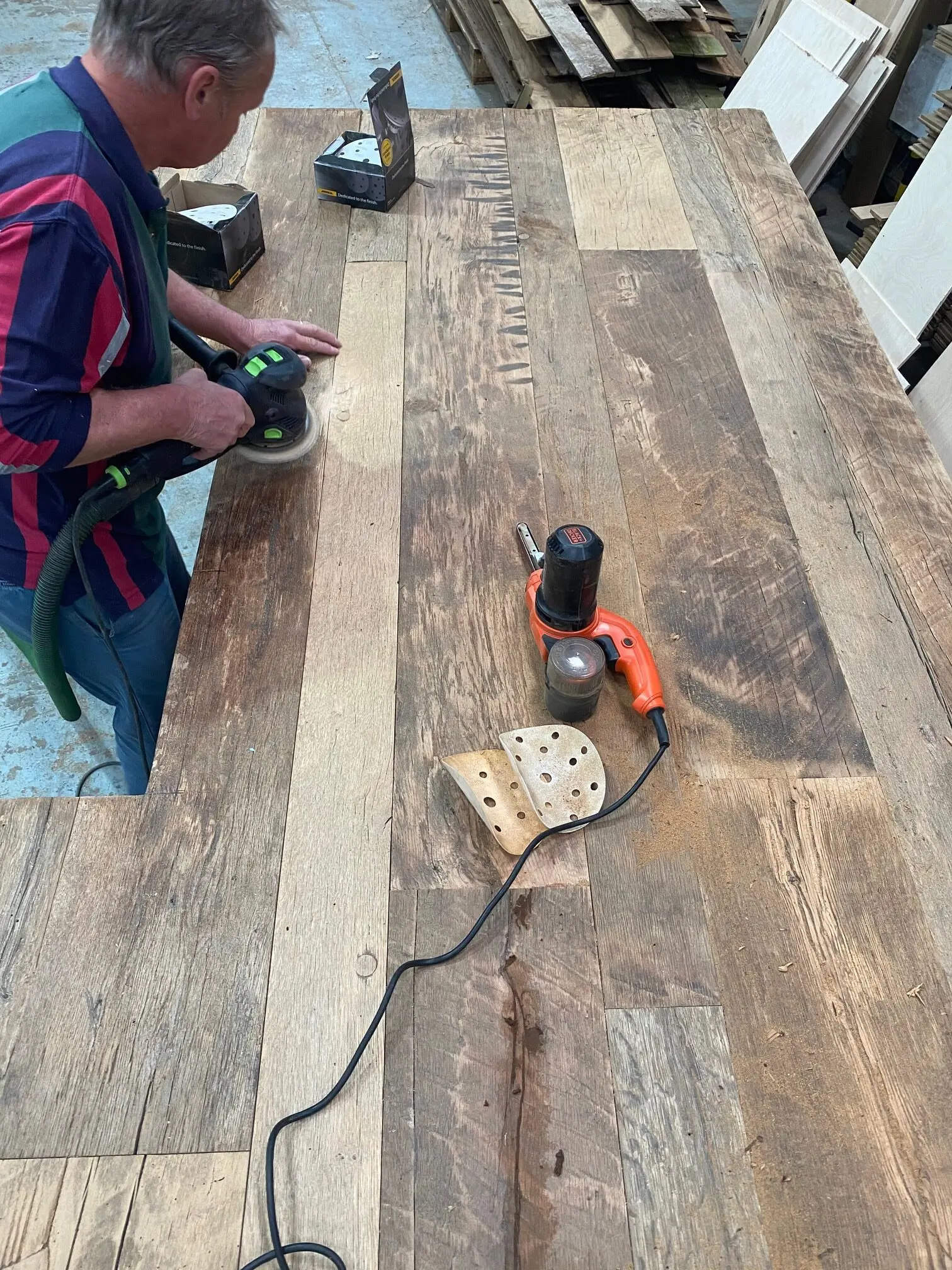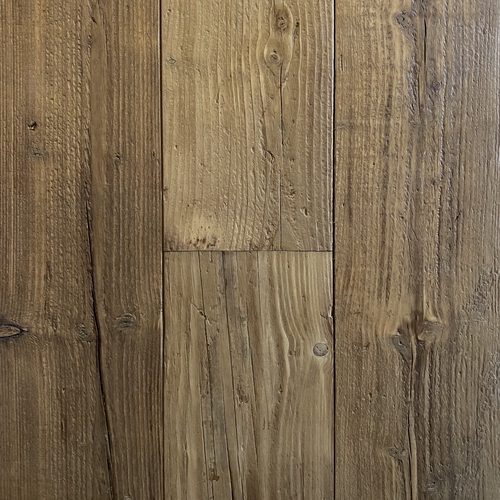
Reclaimed wood or lumber has a history and has been used for buildings and structures from the 18th to the early 20th century. The wood is recycled and reused to meet today’s ever-growing need for sustainable, eco-friendly homes and businesses.
Reclaimed wood shouldn´t be confused with salvaged wood, which has been cut and stored for several years but is not used for construction.
The reclaimed wood story
Today’s century-old reclaimed wood emerges from a time when wood was in abundance, both in North America and Europe, and was used as a primary building material.
As the Industrial Revolution took hold, sawmills were often the core of many towns, providing employment and a plentiful wood supply.
Most recycled flooring and wall panelling in homes, offices, bars, and restaurants come from the factories, warehouses, mills and railways of the USA and France and the industrial north of England.
In recent years, we’ve come to learn to protect our world, and there is less wood available for construction, so we’ve looked to the ecological equivalent of newly harvested wood – reclaimed wood.
Reclaimed wood is a stylish and popular choice to decorate and enhance commercial premises and modern homes.
Wood over 100 years old is particularly suitable for high-traffic areas due to its tight grain, making it resistant and hard-wearing.
Which woods are reclaimed?
Any wood species can be reclaimed, but some of the most common are Douglas fir, redwood, pine and oak.
A rare reclaimed wood species is longleaf (heart) pine, which can take up to 500 years to mature, as opposed to the more common yellow pine, which only takes 50 years.
Longleaf pine produced enormous trees in the past, meaning long and sturdy planks, which were the mainstay of the USA’s wood industry hundreds of years ago.
However, today, only 2% of its original planted area in the US is covered by this species, compared to 41% in the 1800s. This loss is immense and shows why using reclaimed wood is so important.
English oak trees are also rare and incredibly long-living, and they take up to 200 years to reach maturity. Making it arguably the longest-living tree you can find in the English landscape.
Oak is a popular choice for reclaimed wood and, in particular flooring due to its versatility in terms of finish and colouring. Much of our reclaimed oak flooring range comes from oak trees used for old buildings throughout Europe.
Why use reclaimed wood?
Besides the beautifully rustic character reclaimed wood lends to any building, modern or traditional, commercial or private, its ecological benefit is clear.
The environmental impact of mass forestation worldwide has heightened our awareness of how using reclaimed wood can help protect our future.
Coupled with this social responsibility is the desire for the authenticity of reclaimed wood that tells a story and has a history. Your kitchen floor could have once been the walls of a French railway station or your office wall cladding the beams from a barn or warehouse.
Does the source and age of reclaimed wood matter?
There are various reclaimed wood grades from different periods and backgrounds. It’s essential to consider the following when choosing reclaimed wood (which is what we do on your behalf):
- Wood – infestation, chemical contamination, and durability are all factors to consider.
- Quantity – when ordering reclaimed wood, it’s essential to check the amount of timber available for the delivery date. Because the wood is reclaimed, there may not be sufficient in the batch ordered for a project. A different batch will contain other lumber.
- Age – reclaimed wood can range from 1 to over 400 years old. The specification is important – where it comes from and how old it is.
What to look for before buying Reclaimed Wood?
When you buy your reclaimed wood from a specialist, you pay not to worry about potential defects. These are the most common problems with reclaimed timber that specialist suppliers look out for.
- Rotted wood: They look for areas of wood rot and check how deep they go. Rotten wood is rejected in favour of more solid pieces.
- Insect damage: Many reclaimed wood dealers kiln-dry their products to kill insects. They look for evidence of insect activity as infestations can quickly spread from one piece of reclaimed wood to another.
- Nails and screws: Old pieces of wood often have nails and screws embedded in their lengths. Due to the age of much-reclaimed wood, the heads may not be visible or have broken off, meaning it is wise to use a metal detector or magnet to find these fasteners before sawing the wood.
Using reclaimed wood
A reclaimed wooden floor or wall cladding makes a statement. As well as demonstrating excellent taste and a love for the character and finish of reclaimed wood, it shows your commitment to environmental matters.
Reclaimed wood is used for both residential and commercial projects alike. It can be used for interiors and exteriors as flooring, furniture or cladding.
Where does your Reclaimed wood come from?
I’m worried about the inherent inconsistencies with reconstructed wood; how do you solve this problem?
The strongest feature of reclaimed wood is the tonal variation. We feel this should be embraced rather than combated. Depending on what you choose to finish the floor with (hard wax oil, traditional wax, lacquer), you will be able to even out the tone of the floor, but this will not be as uniform as pre-finished new wood.
You should ask your fitter about colouring options if you are concerned about achieving the right colour when using reclaimed wood.
Is reclaimed wood FSC-certified?
Not all reclaimed wood is FSC certified; however, referring to their rules around reclaimed or recycled timber is helpful. For it to qualify as FSC-certified timber of post-consumer origin, reclaimed wood must have been used once and have reached “the end of its useful life” for its original purpose.
FSC-certified wood has met specific standards that guarantee sustainable practices were used in its creation. Using FSC-certified timbers in your building will earn you credits in the Leadership in Energy and Environmental Design (LEED) Green Building Rating System.
Is reclaimed wood really sustainable?
Does reclaimed wood flooring have to be installed a certain way? Is it different from Solid Wood?
After carefully processing reclaimed wood into flooring, it is highly stable and can be installed like most solid and hardwood flooring.
The difference is that reclaimed wood can take two or three weeks to be ready for installation and acclimatise to the new environment and the humidity level.
Depending on the natural surface of the wood, some boards may require some hand scraping to even out a few of the edges.
Wood acclimation and installation are the two most important things to ensure your flooring lasts a lifetime.
Glue and Nails are the standards with Reclaimed Wood, but reading the supplier’s installation manual is always advisable.
* We do not recommend the floating methodology, as it is not a long-term solution.
Is reclaimed wood a good choice for kitchen or bathroom floors?
Reclaimed wood floors are an excellent choice for kitchens and bathrooms.
Older reclaimed planks have naturally closed pores, which makes antique reclaimed wood great for kitchens and bathrooms.
However, sealing on-site is always advisable.
Does reclaimed wood require a lot of care and maintenance?
Like any new wood floor, reclaimed wood will perform and look its best with appropriate maintenance.
Wood finishing, indoor foot traffic, and usage level are the few things that will direct a care and maintenance program.
The proper care goes a long way and can help keep your floors great for decades.
For more information on after-care, use this link:
Is reclaimed wood different from antique wood?
Not all reclaimed wood is Antique, and very few understand the difference. Most of our antique wood is at least 300 to 400 years old, and just like with a centuries-old Antique cabinet, a limited material supply is available.
Unlike other reclaimed collections that are easier to procure, they are cut from old structural beams.
As with any skilled Antique restoration, working with antique wood requires many skills for the thousand judgment calls one must consider when uncovering such timeless beauty piece by piece.
Is reclaimed wood safe?
Because wood is a natural organic material, the Leadership in Energy and Environmental Design (LEED) considers solid wood an inherently non-emitting source for Volatile Organic Compounds (VOCs).
This means that it doesn’t give off any pollution; more than this, wood can absorb toxins from our environment.
These low VOCs can be affected by products added to the wood, like a finish, fire retardant, substrates or glue.
It is worth checking your supplier’s environmental credentials to ensure they do all they can to keep VOCs to a minimum.
Is reclaimed wood expensive?
Reclaimed wood can be expensive because of the work of reclaiming and refinishing it.
There are costs associated with the transportation, storage and artisanal skills involved in creating reclaimed wood products, which affect the price and value of the product.
Reclaimed flooring costs between two and three times as much as conventional flooring. But this varies hugely depending on many variables.
The price of reclaimed wood products can be affected by lots of factors, including:
- the species and age of the wood,
- how much of a particular species is available (and where in the world this is located)
- how the product is being sourced.
Prices also vary between companies. Generally, you will spend a little more than you would on new wood because of the extra work and skill involved in salvaging wood, treating it and restoring its beauty.
Does reclaimed wood weather or change colours?
One of the beauties of reclaimed wood is patterns, lines, and markings tell its unique story. This story doesn’t end when this wood is brought into a home; it just starts a new chapter.
Reclaimed wood can continue to change colour or weather, depending on the wood used, the chosen treatments, and how regularly the wood is maintained.
Is reclaimed wood LEED, WELL and LBC certified?
The LEED program is a well-recognised rating system for sustainable building. Architects and designers can increase their chances of a whole project qualifying for LEED certification by using reclaimed wood products in their projects.
The WELL Building Standard measures and certifies features of the built environment that impact human health and well-being. It is well-documented that bringing wood into our homes and office spaces suits our physical and mental well-being.
Living Building Challenge (LBC) is a comprehensive sustainable building standard designed to encourage building practices that enhance community life and benefit the planet.
LEED, WELL and LBC were all created to work harmoniously with each other, and reclaimed wood products show how well they do this.
With LEED rewarding the sustainability of reusing precious materials, WELL recognising the well-being-boosting properties of wood and LBD rewarding the community and planetary impact, they help to illustrate how valuable a reclaimed wood product is.
As both WELL Building Standard and Living Building Challenge (LBC) have biophilic design focuses, the certification helps illustrate how reclaimed wood is an impactful and logical solution for bringing nature into a space.
Is reclaimed wood good for my health?
It has now been proven that it also can enhance our wellness. Maybe this is why it’s so tempting to stroke a smooth wooden bannister or to feel the finish on a bespoke piece of joinery.
With the growth of biophilic design, architects and designers are increasingly considering wellness.
Low VOC materials are being chosen over their more highly manufactured and polluting counterparts, and elements that enhance daylight’s impact and allow for proper ventilation are considered essential, especially in our post-pandemic world.
Biophilia explains our connection to nature and opposes the industrial minimalism that has become the norm in our built environments over the preceding decades. As the hard lines and artificial lighting that minimalism promoted are not found in nature, we now understand why they adversely affect everything from communication to mental health to productivity.
The studies in Japan revealed that wood serves as a de-stressor and has been shown to lower blood pressure, while Canadian studies yielded similar results: wood contributed to lower heart rates and stress responses than environments with no wood.
While these results focus on wood in general, we have seen anecdotally that Reclaimed wood can deliver emotional connection and, therefore, a more significant biophilic effect. Because reclaimed wood has a history and a story, its history enhances the occupant’s experience in the space in an authentic and meaningful manner, making them not just feel better but be better.
Is Reclaimed Wood B-Certified?
With just over 2200 Certified B Corporations globally, B-certified products are still hard to come by.
While reclaimed wood’s eco credentials make it an ideal candidate for B Corp certification, there aren’t currently any Reclaimed wood suppliers listed among the 2200 B Corp-certified companies.
This could be because B Corp certification measures far more than just the regenerative nature of a business. It also weighs a company’s inclusivity and equitability to measure its social and environmental impact.
There are, however, several architecture, design and building companies recognised with B Corp certification, including:
- Chandos Construction – A construction company that covers all aspects of the design and build process. Aware of the environmental impact of construction, they divert their waste wood to other projects.
- Building Green Inc – A consultancy that champions changemakers in sustainable design and building.
- Forward Thinking design – An interior design company whose vision is ‘Impact driven, human centred strategy and design.’
- Draw Architecture – A London and Edinburgh-based architecture firm that ‘believes every project should contribute socially, environmentally, technologically and contextually.’
- HCMA Architecture + Design is a Canadian architectural firm applying curiosity to everything they do.
- Verdecon – A proudly carbon neutral Australia based building company
Seeing so many companies associated with the traditionally damaging construction industry being recognised with this certification is a sign that the industry is moving in the right direction.
Can we use reclaimed wood for joinery?
Absolutely, reclaimed wood can be crafted into all kinds of joinery, from simple items like kitchen countertops, shelves, and doors to intricate pieces such as staircases and furniture.
However, not every type of wood may suit your project, so it’s crucial to discuss with our team to understand the extent of customization possible.
The Soul of the Tree
At The Reclaimed Flooring Company, we believe in the tree’s soul; we feel that this phrase perfectly represents our brand values, such as Slow Design & Slow Living, Timelessness, Generosity, Reciprocity, Sustainability, Humility, and Community.
We promise to ethically beautify, inspire, craft, make and install with the tree’s soul in mind.



